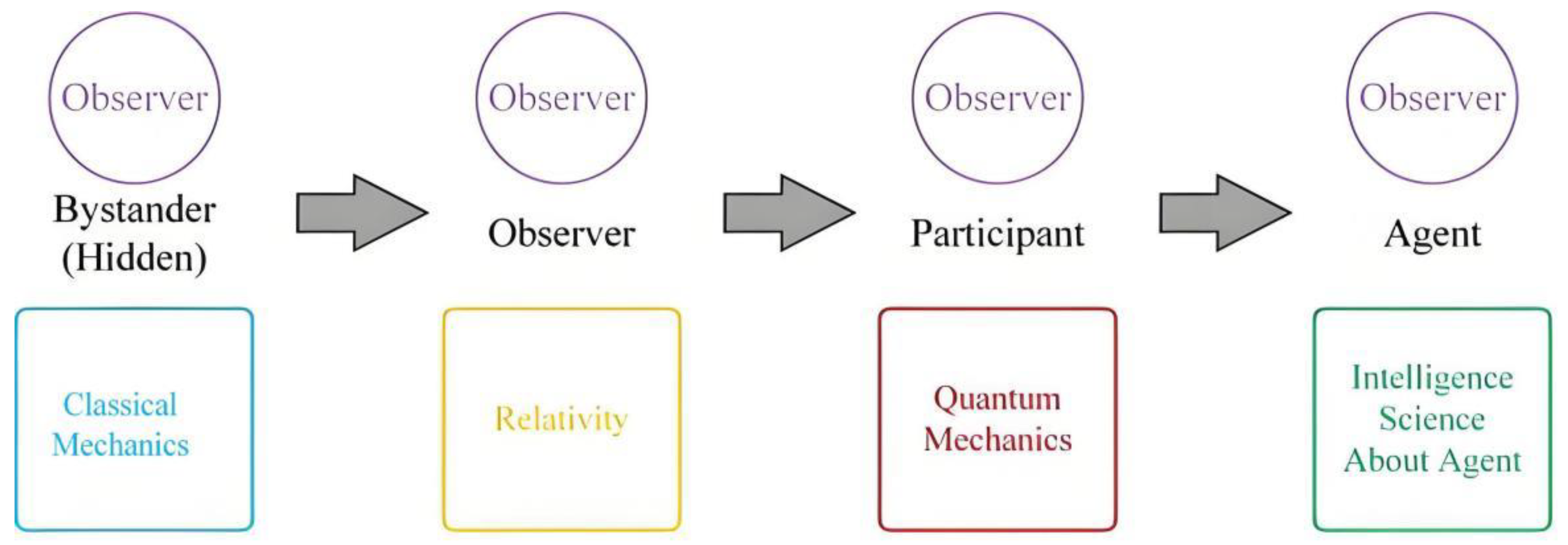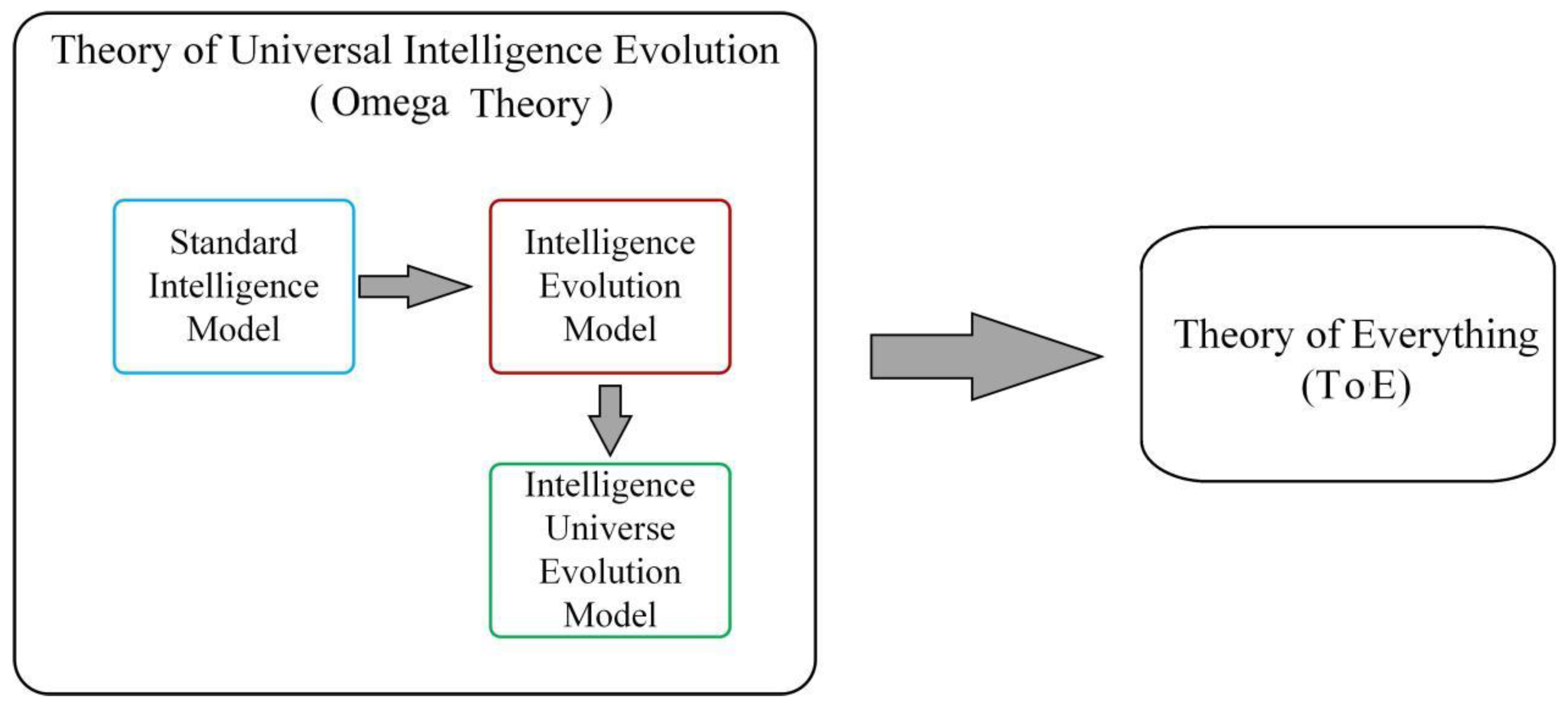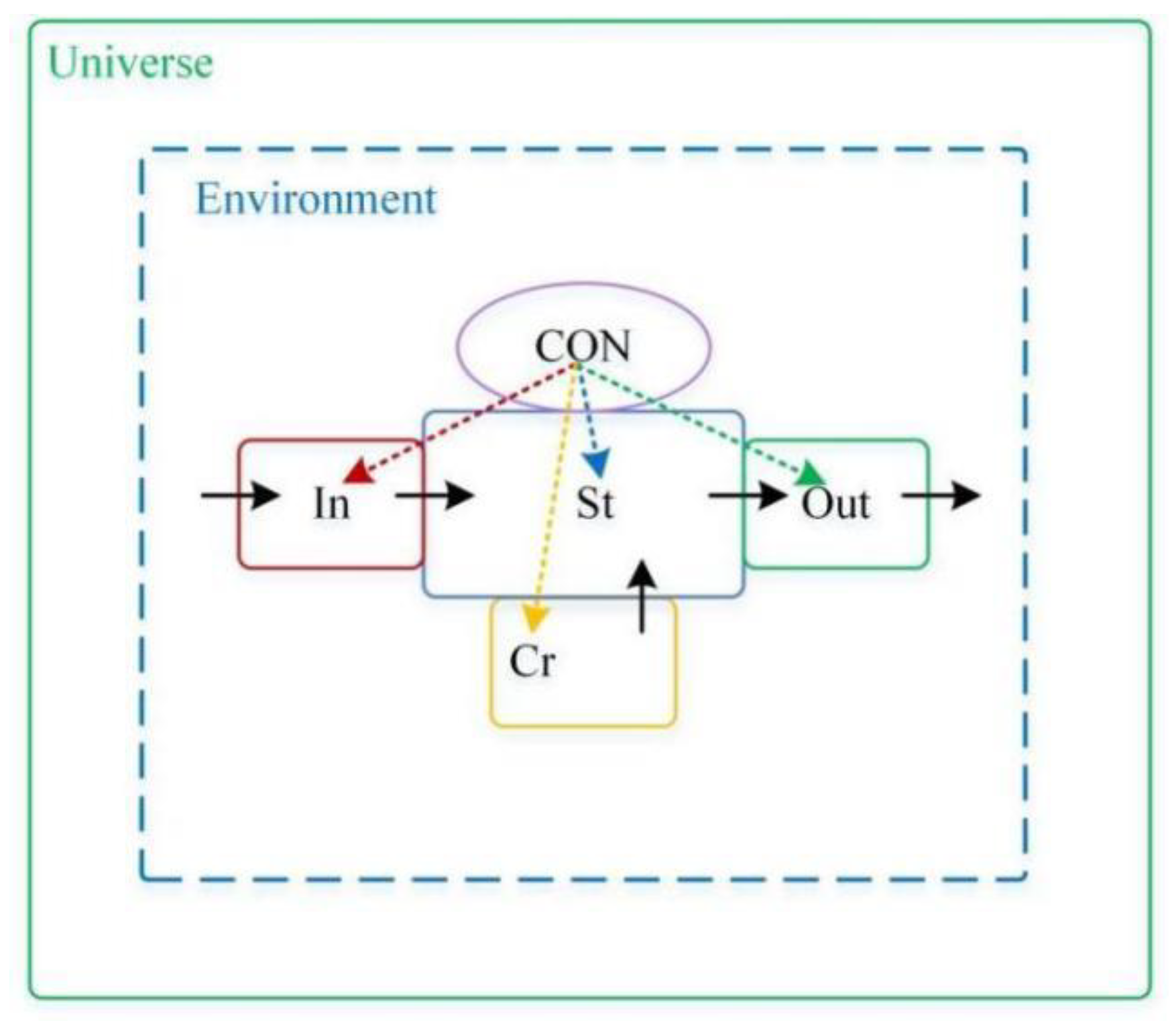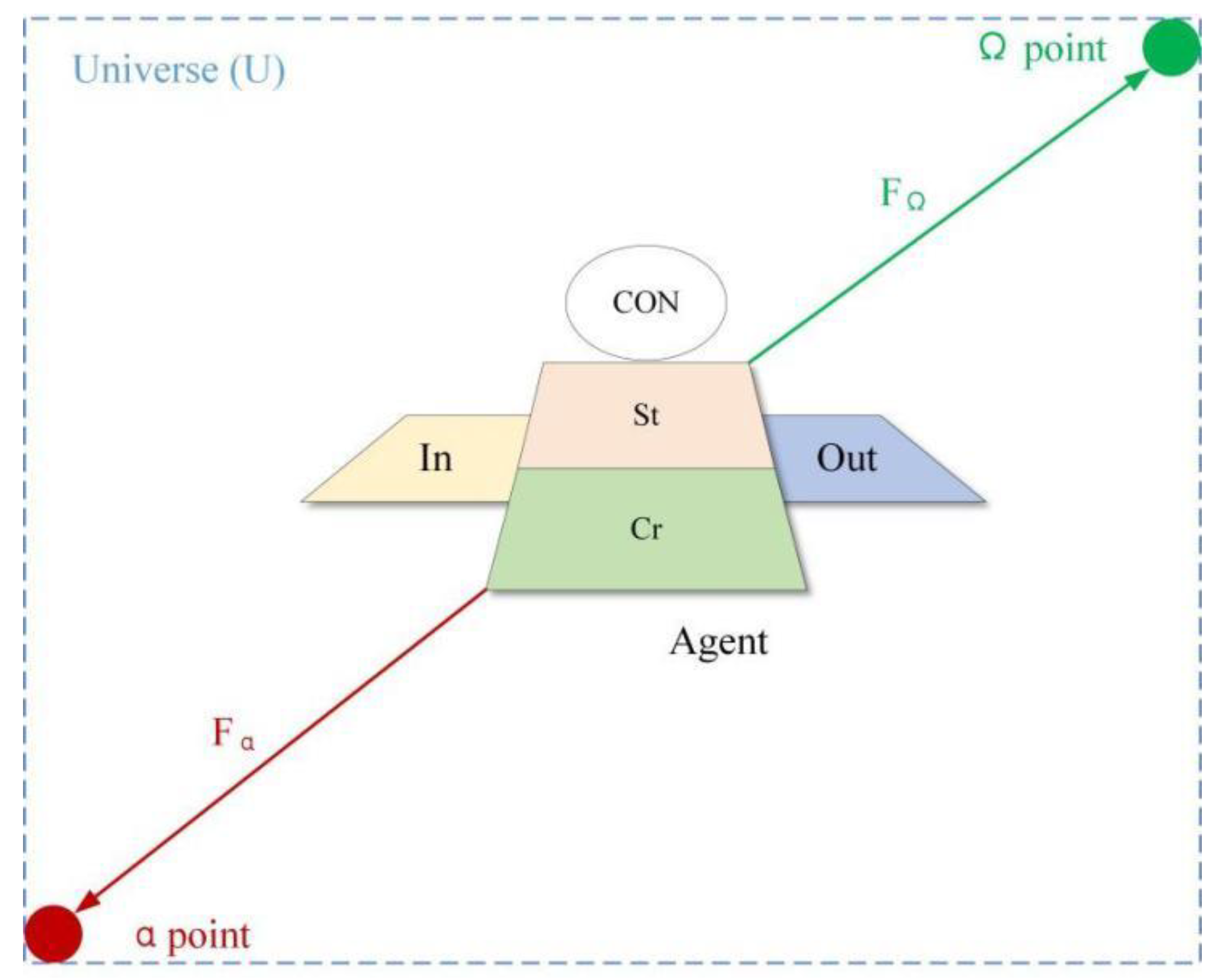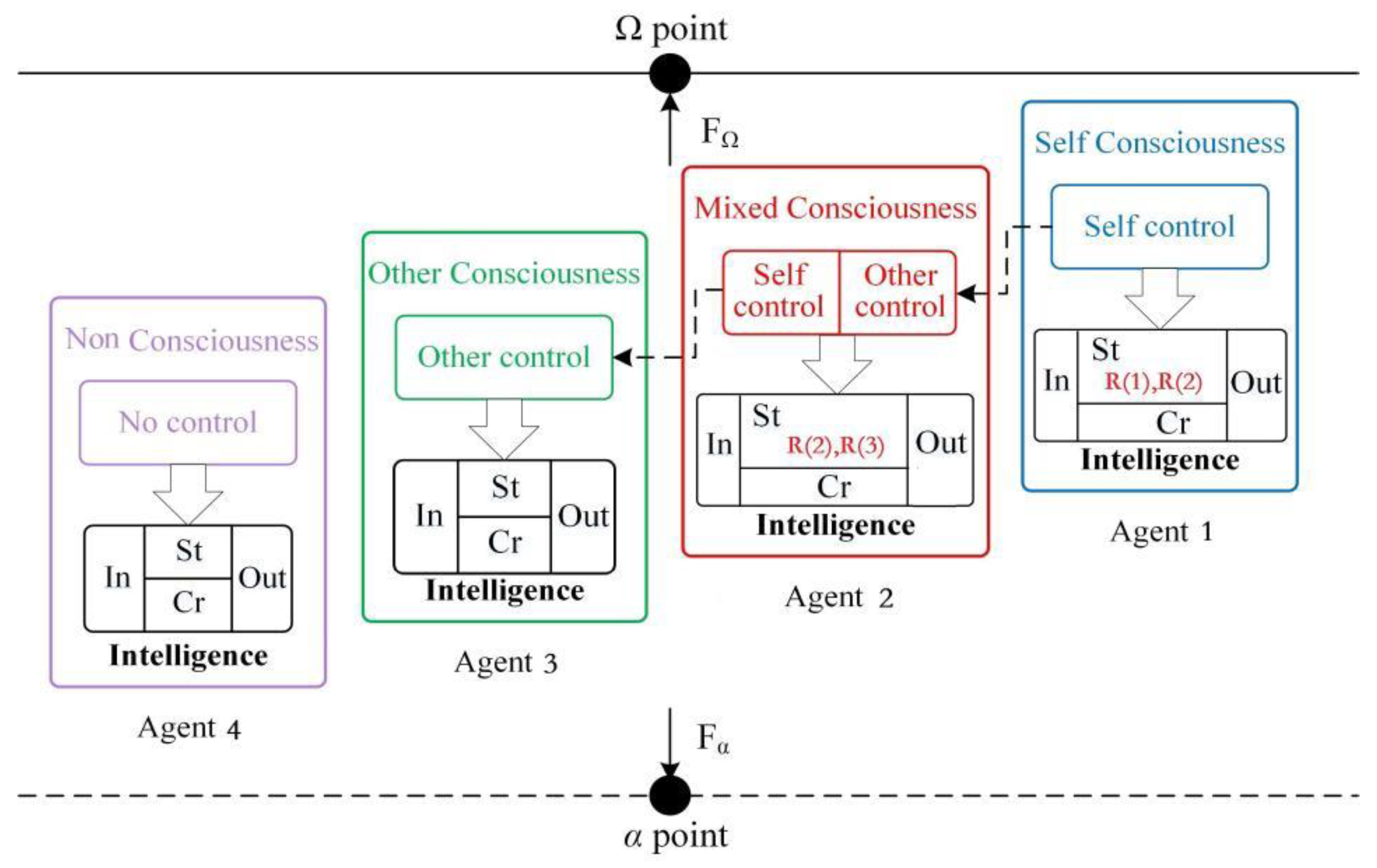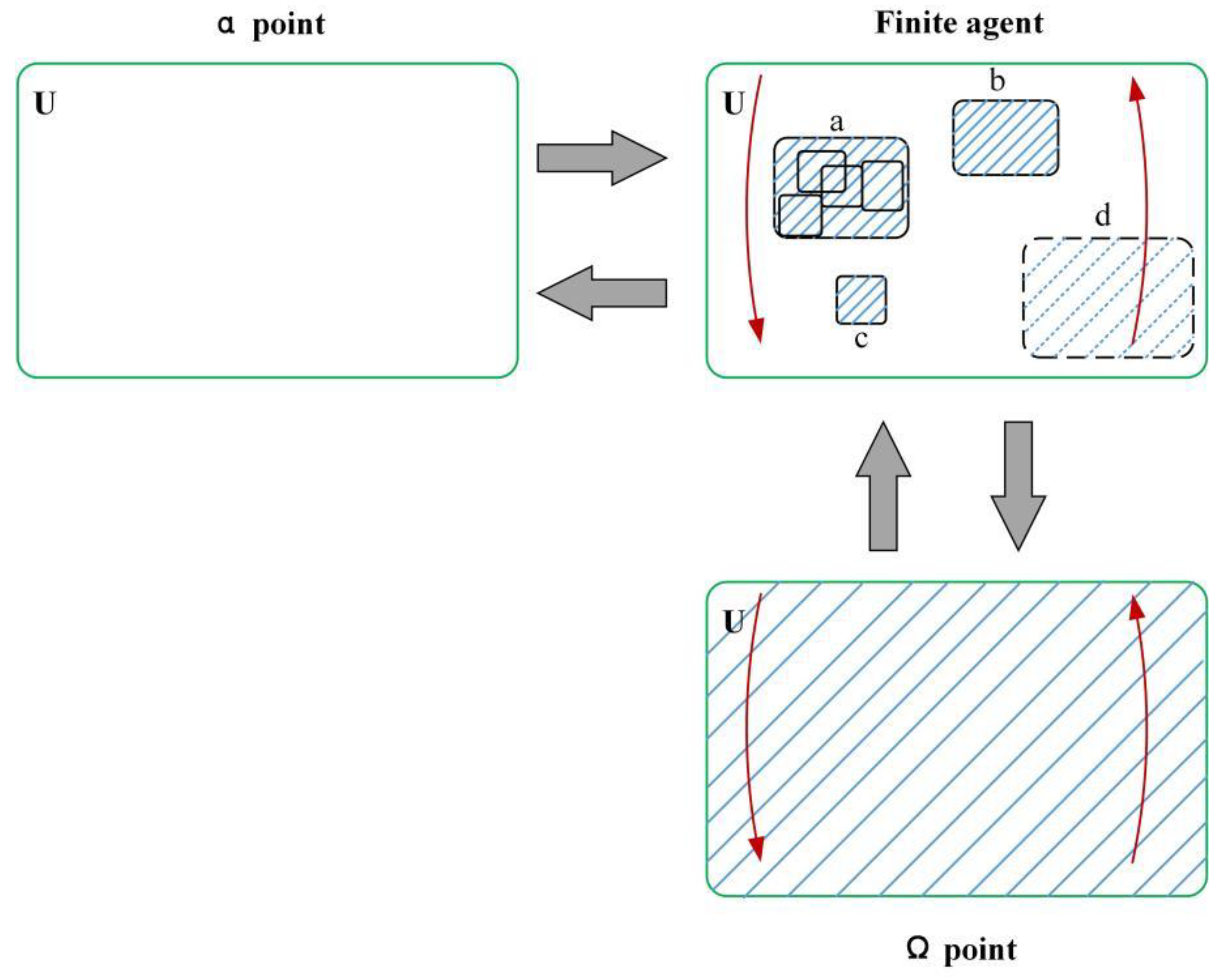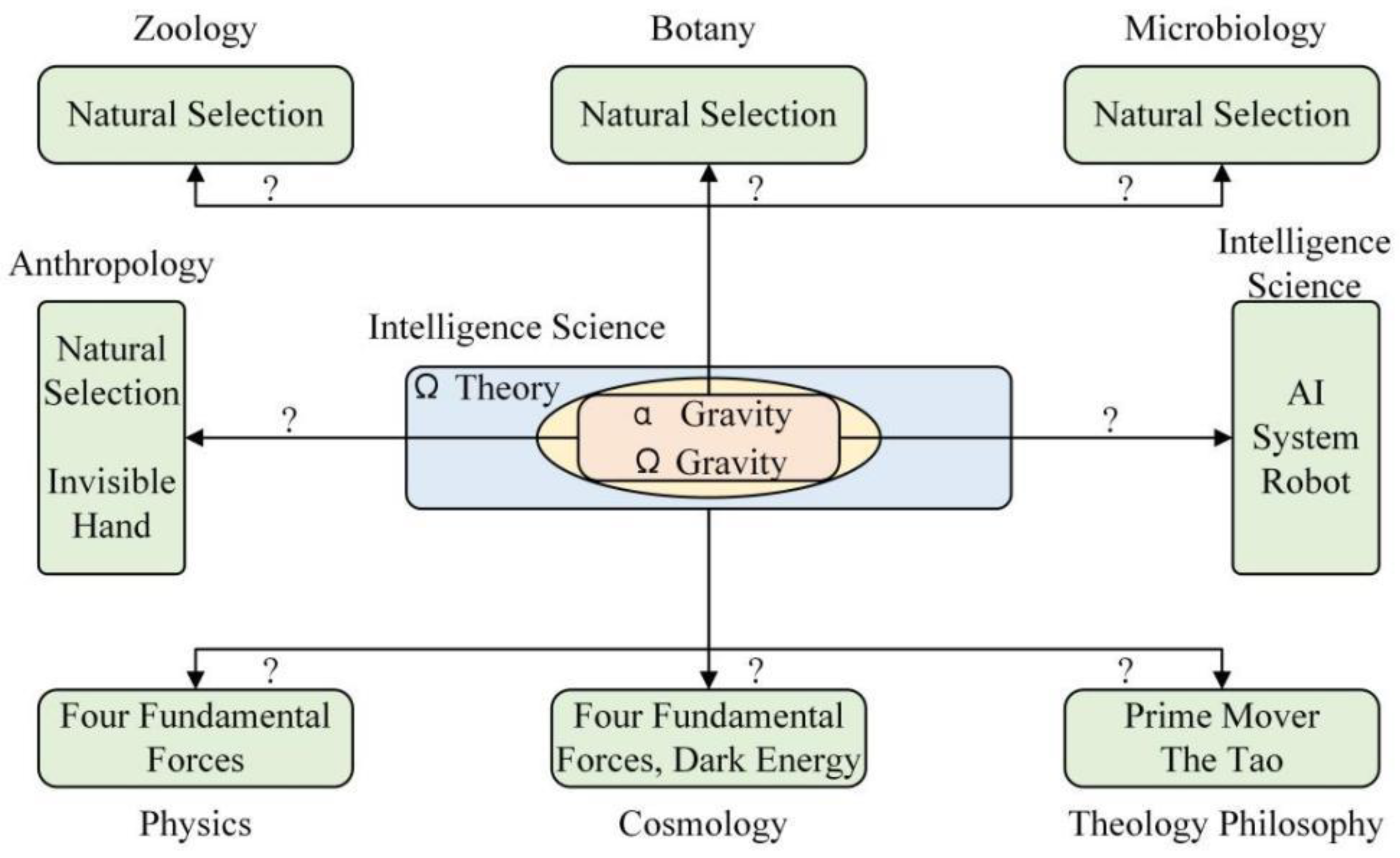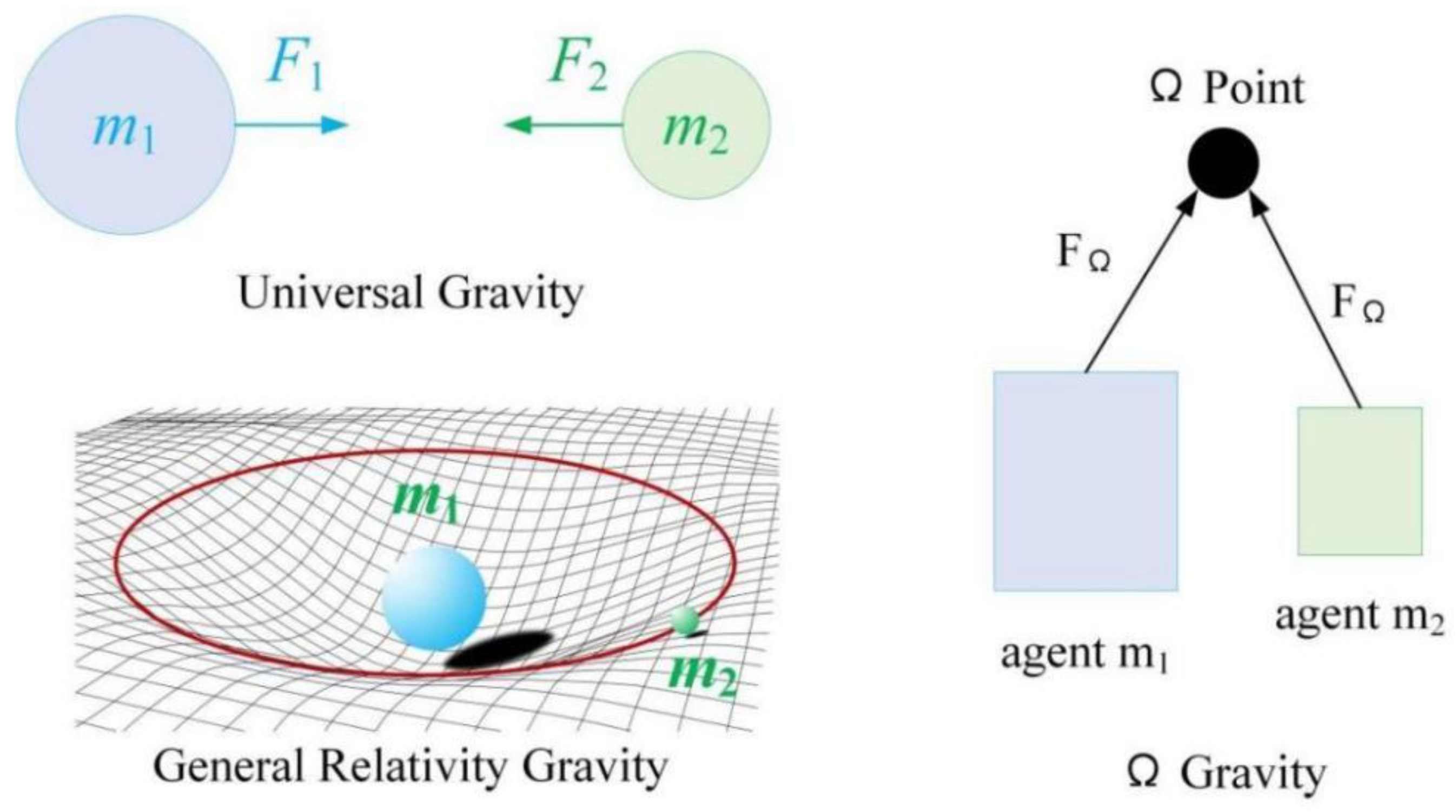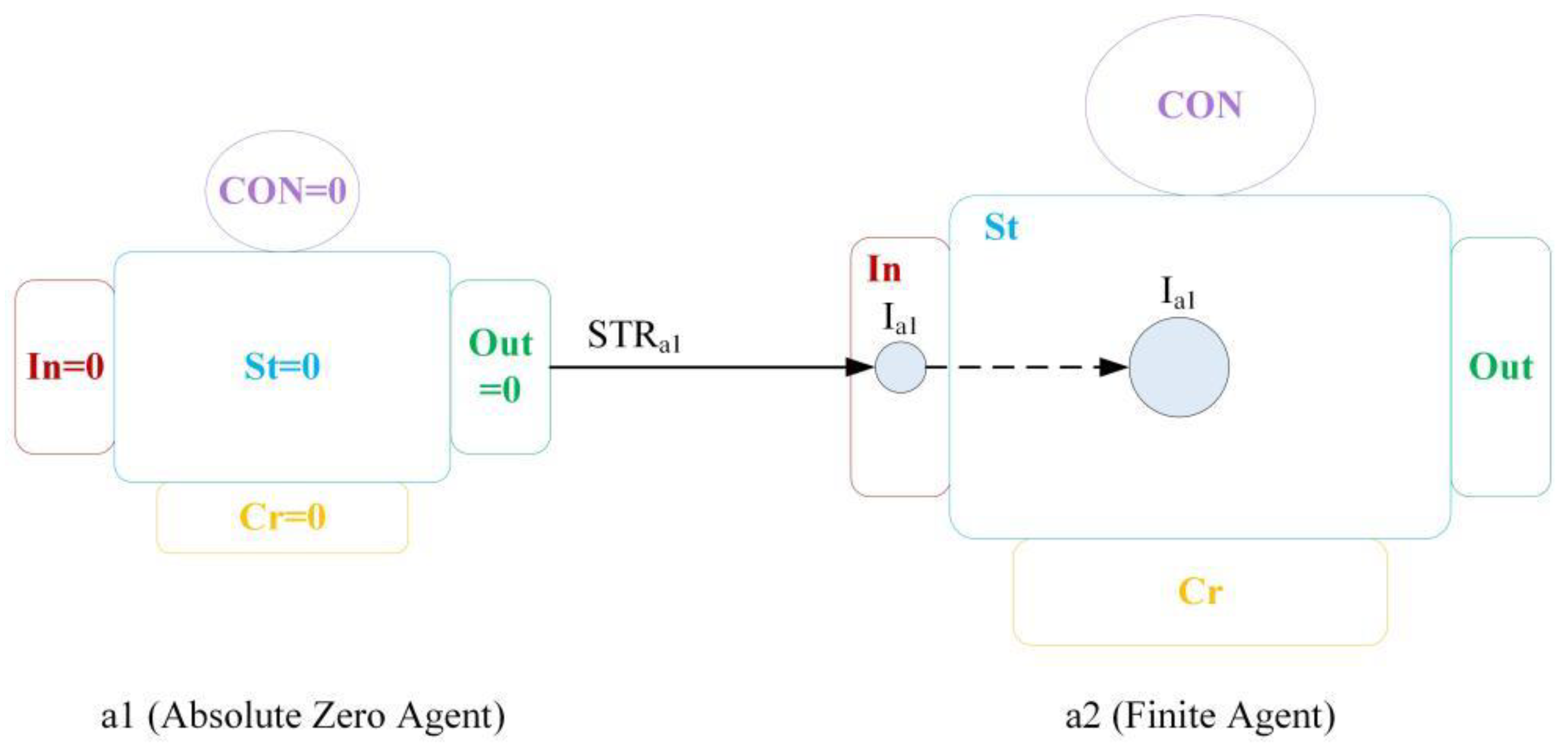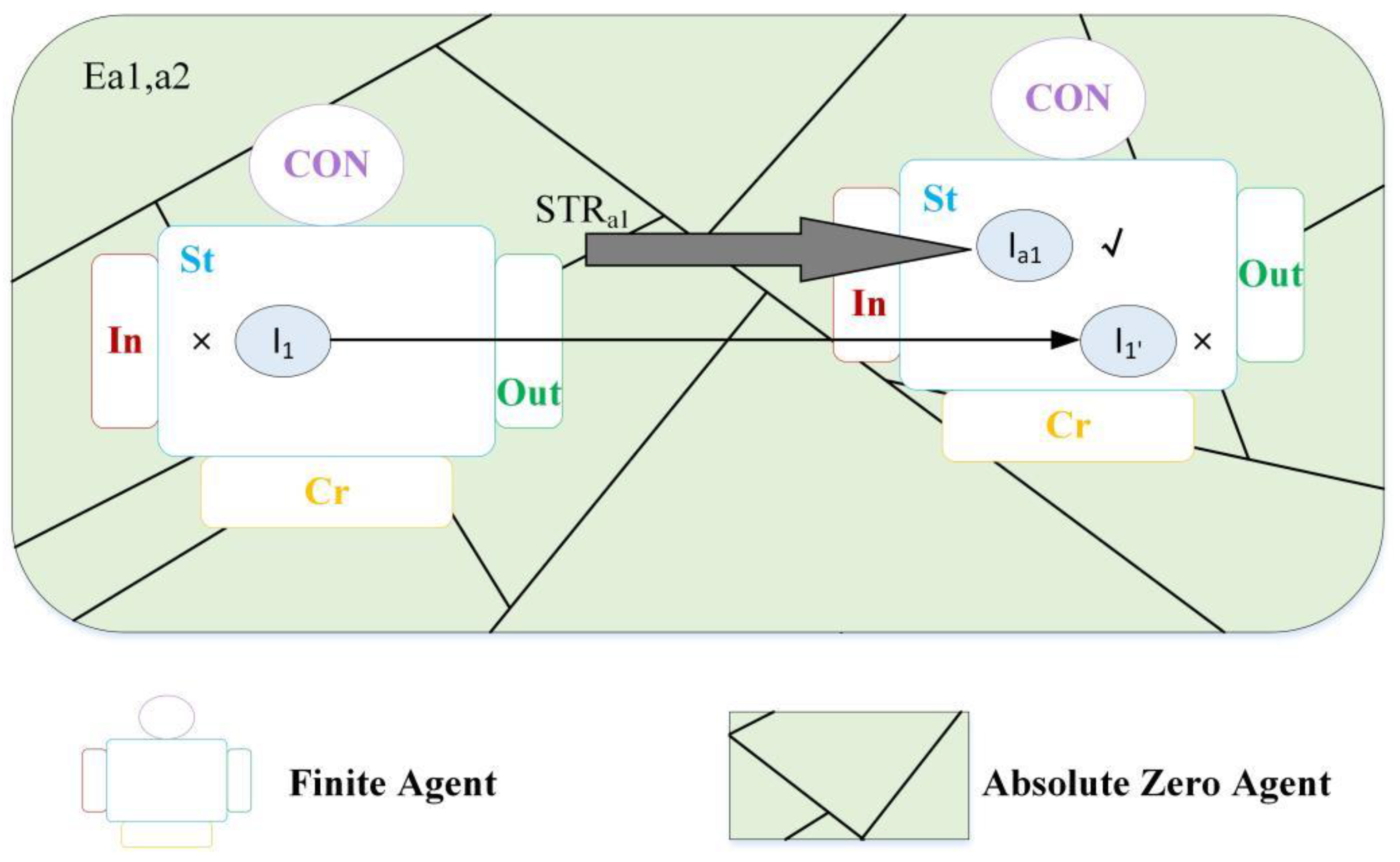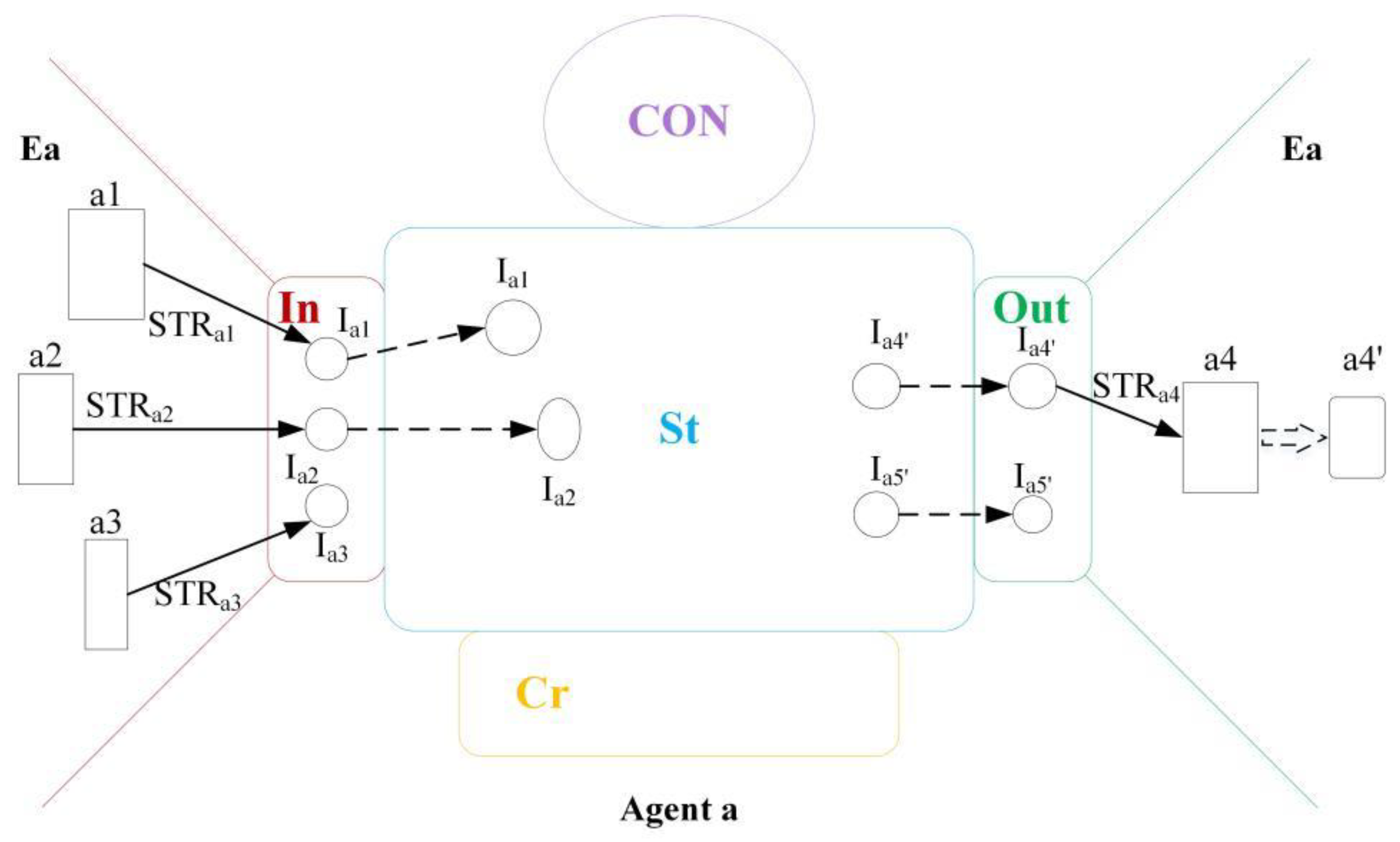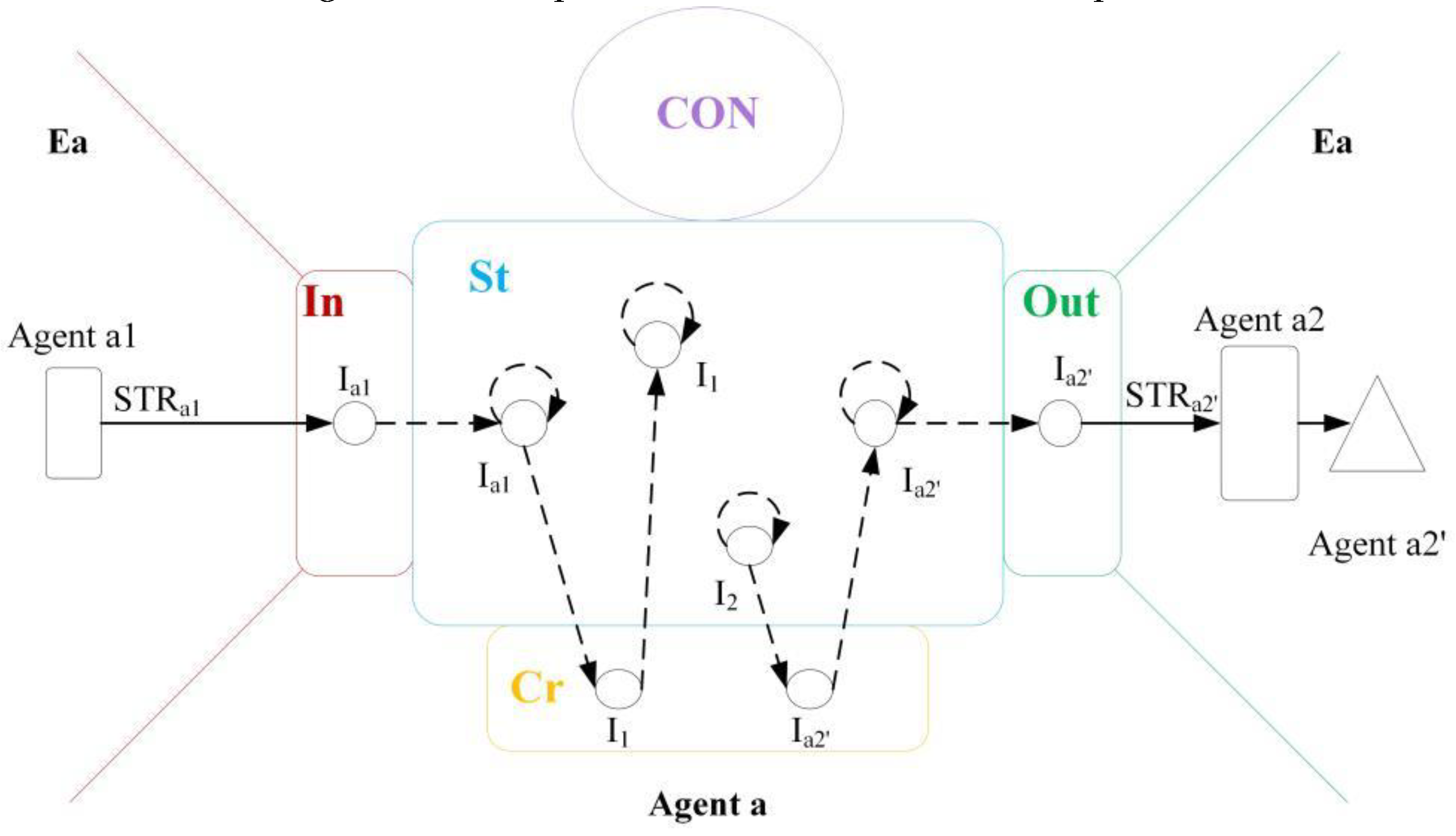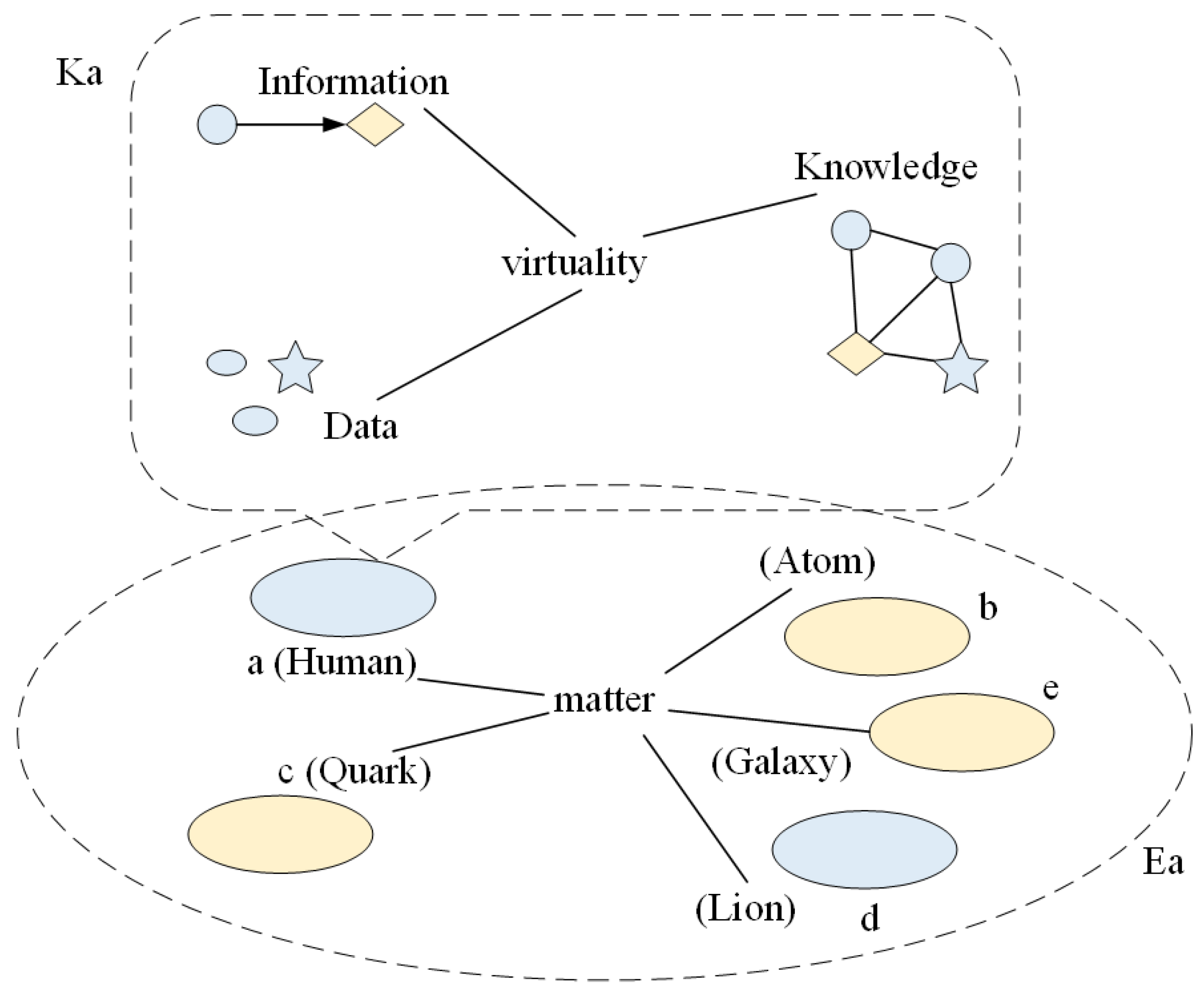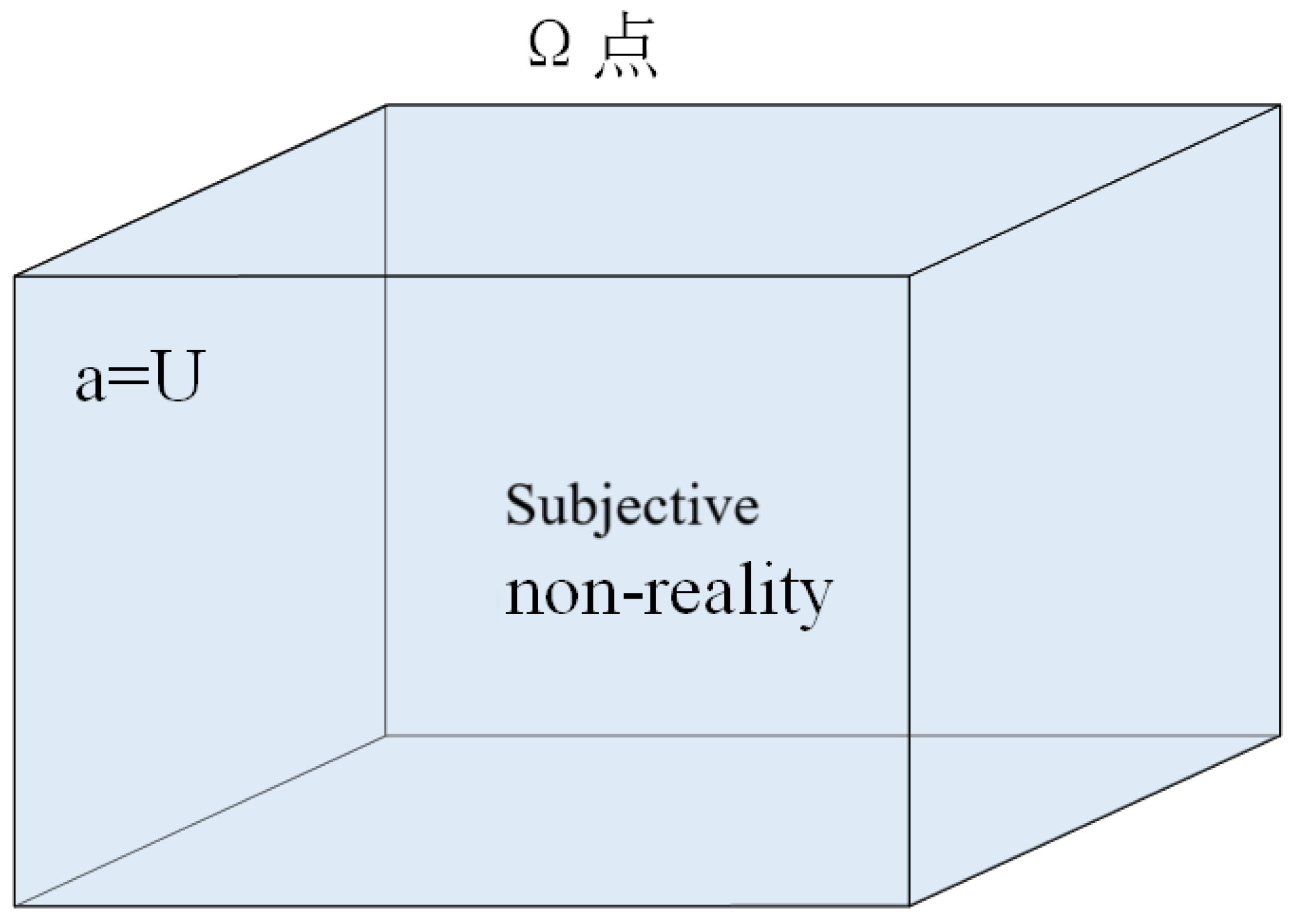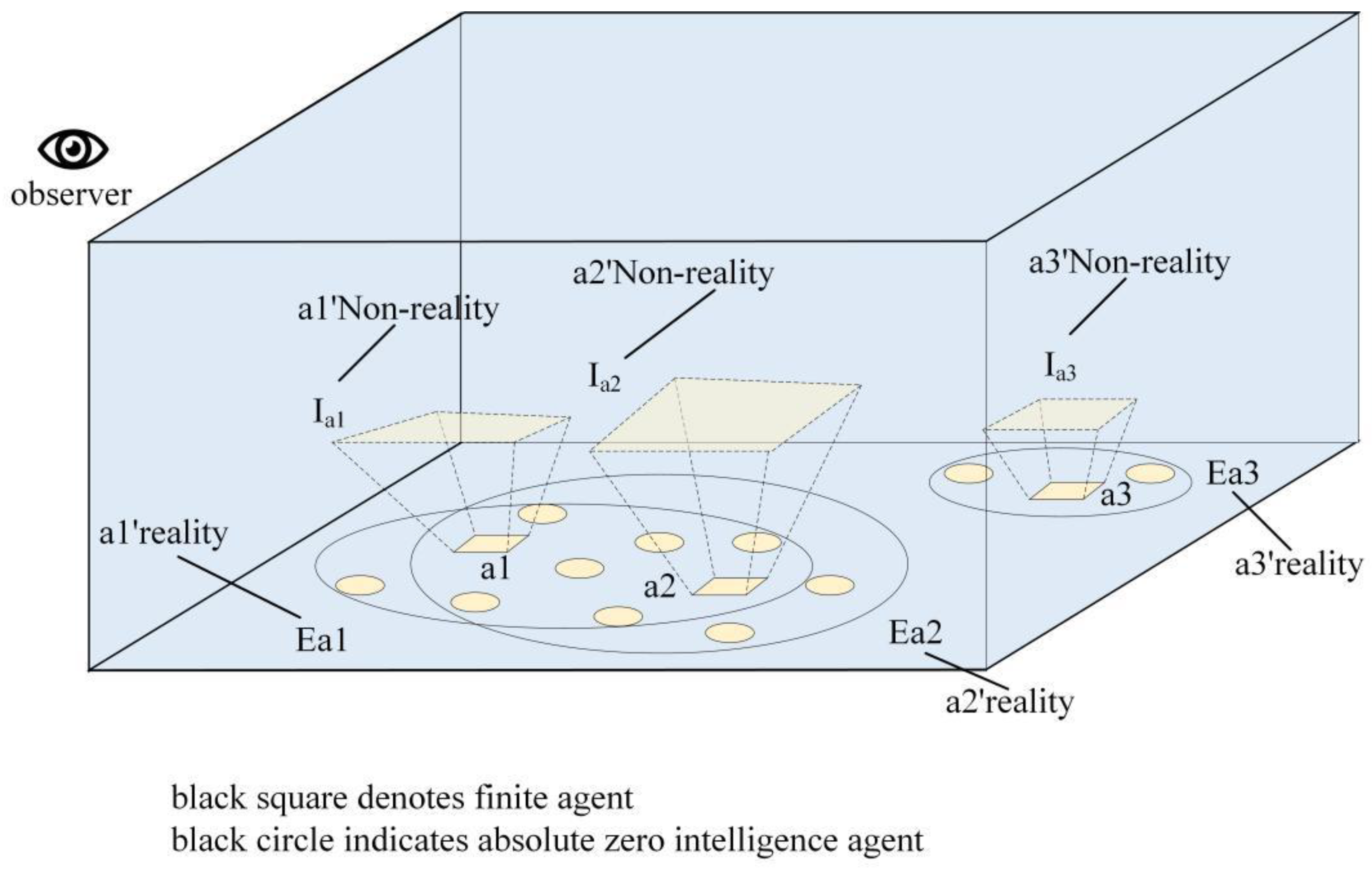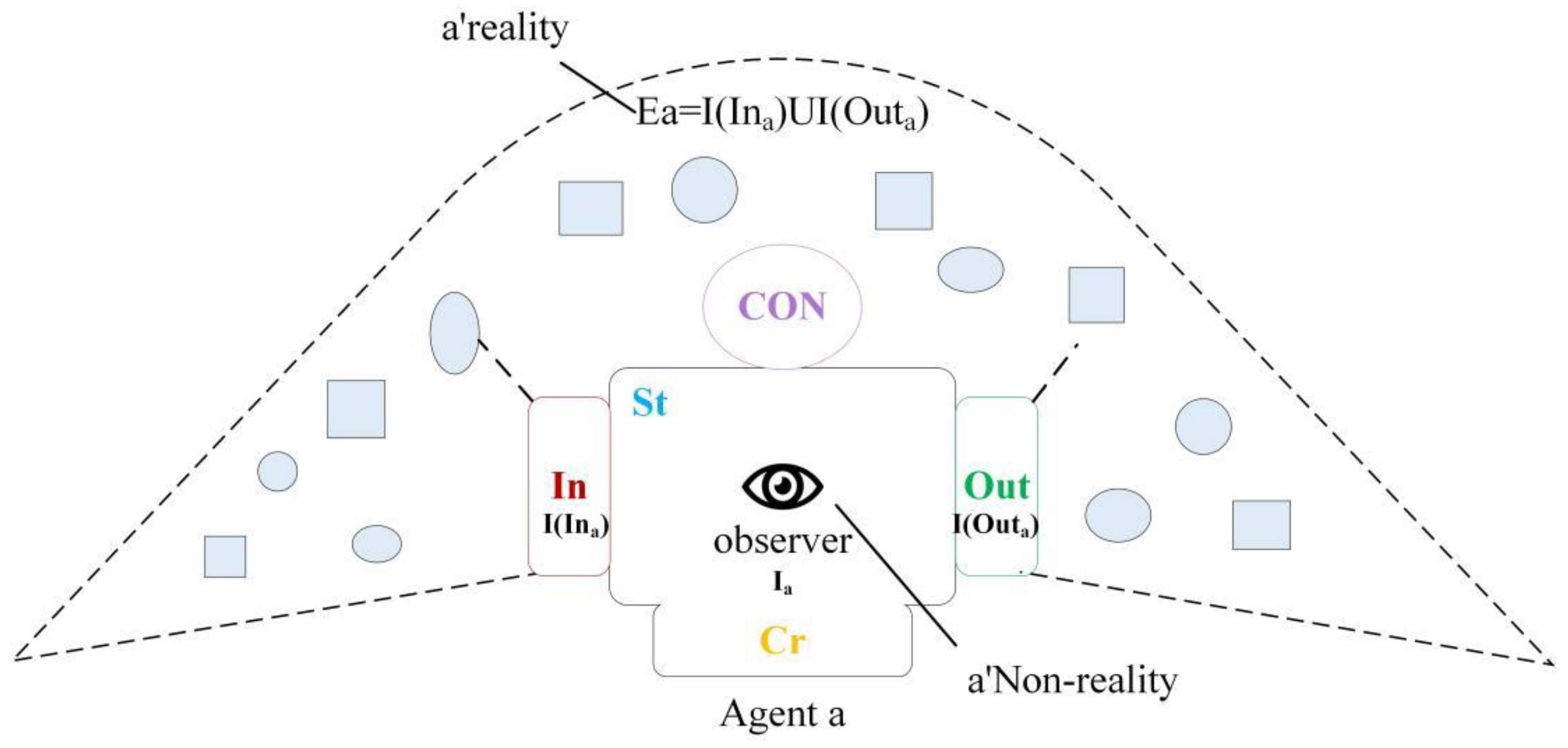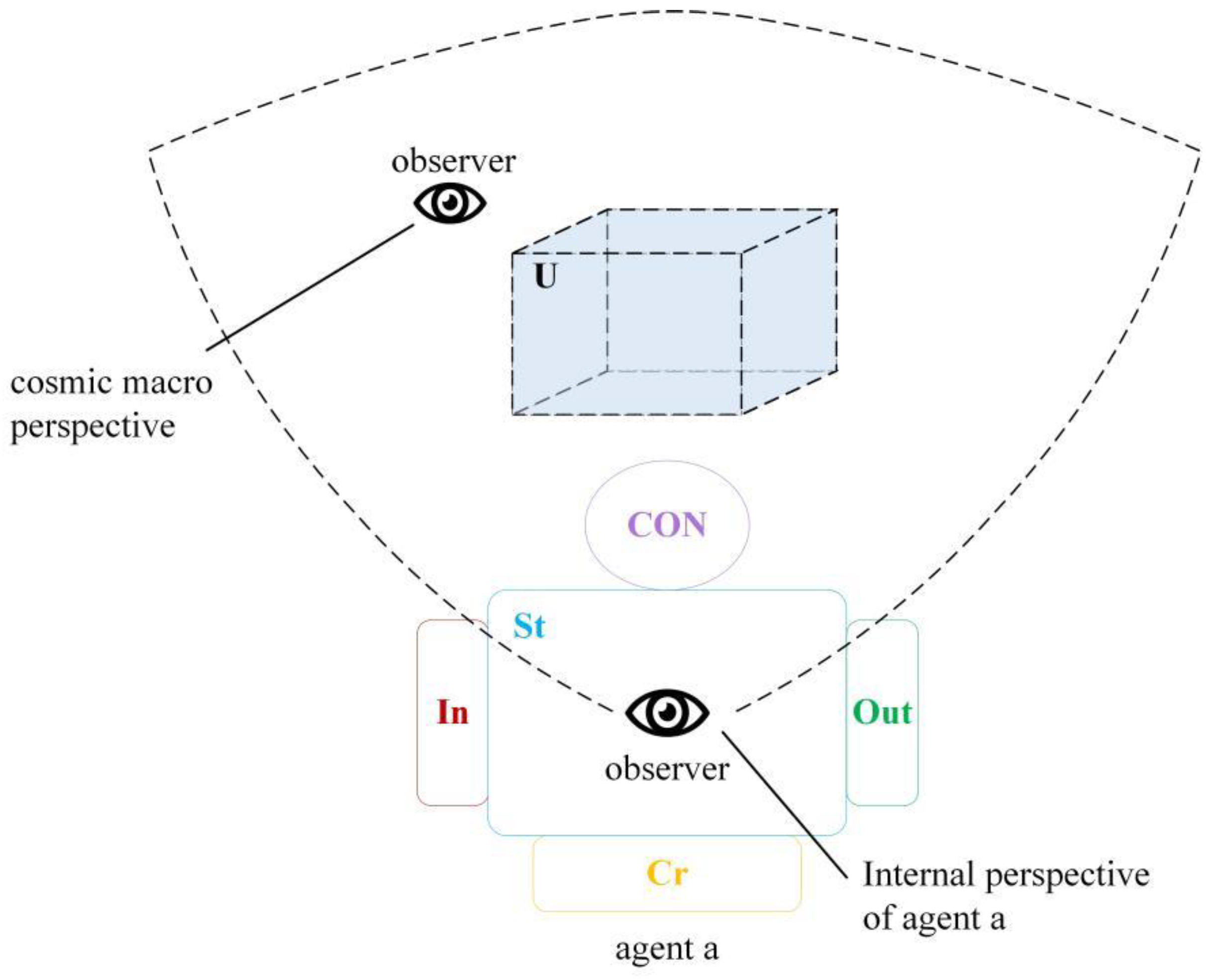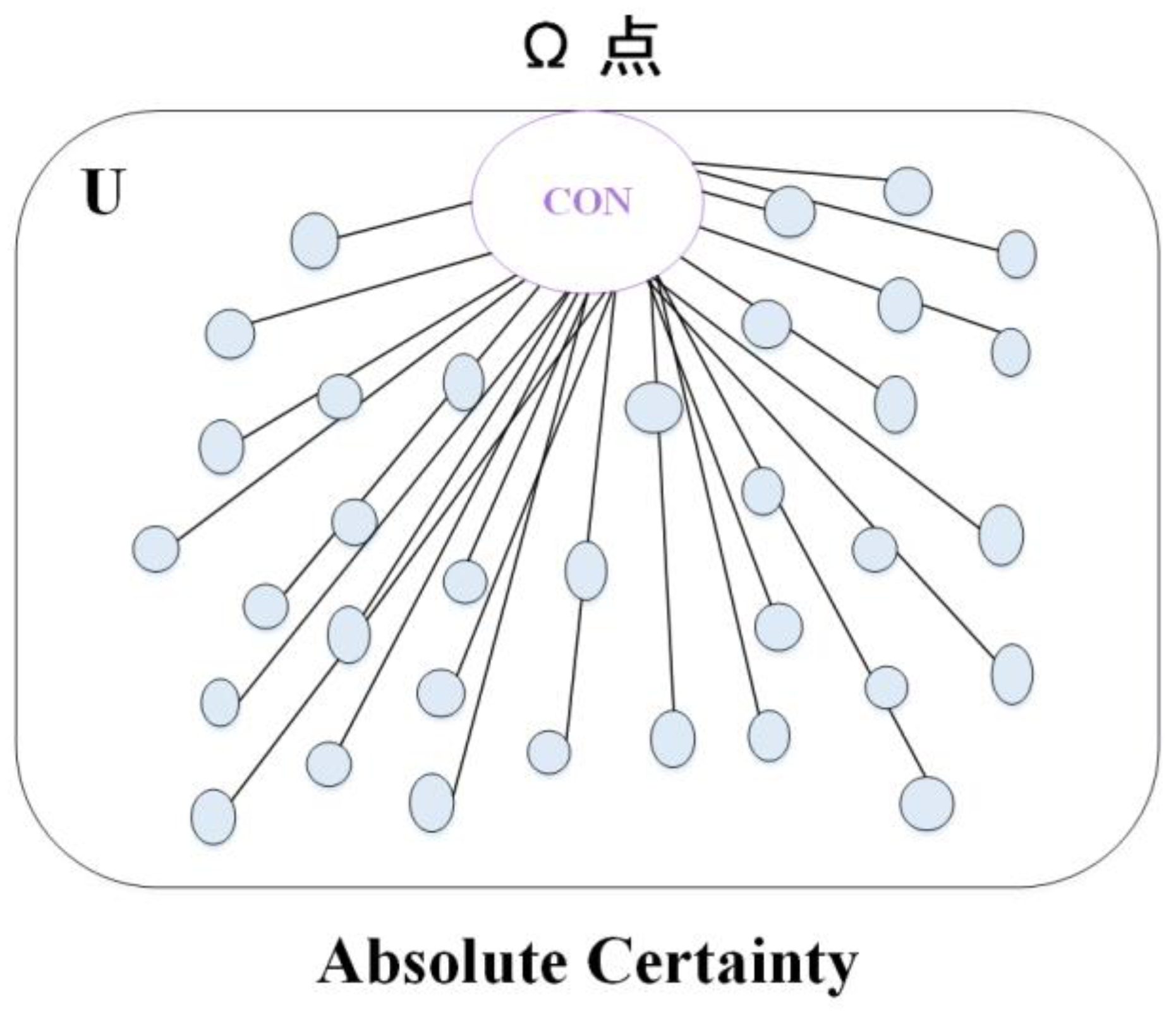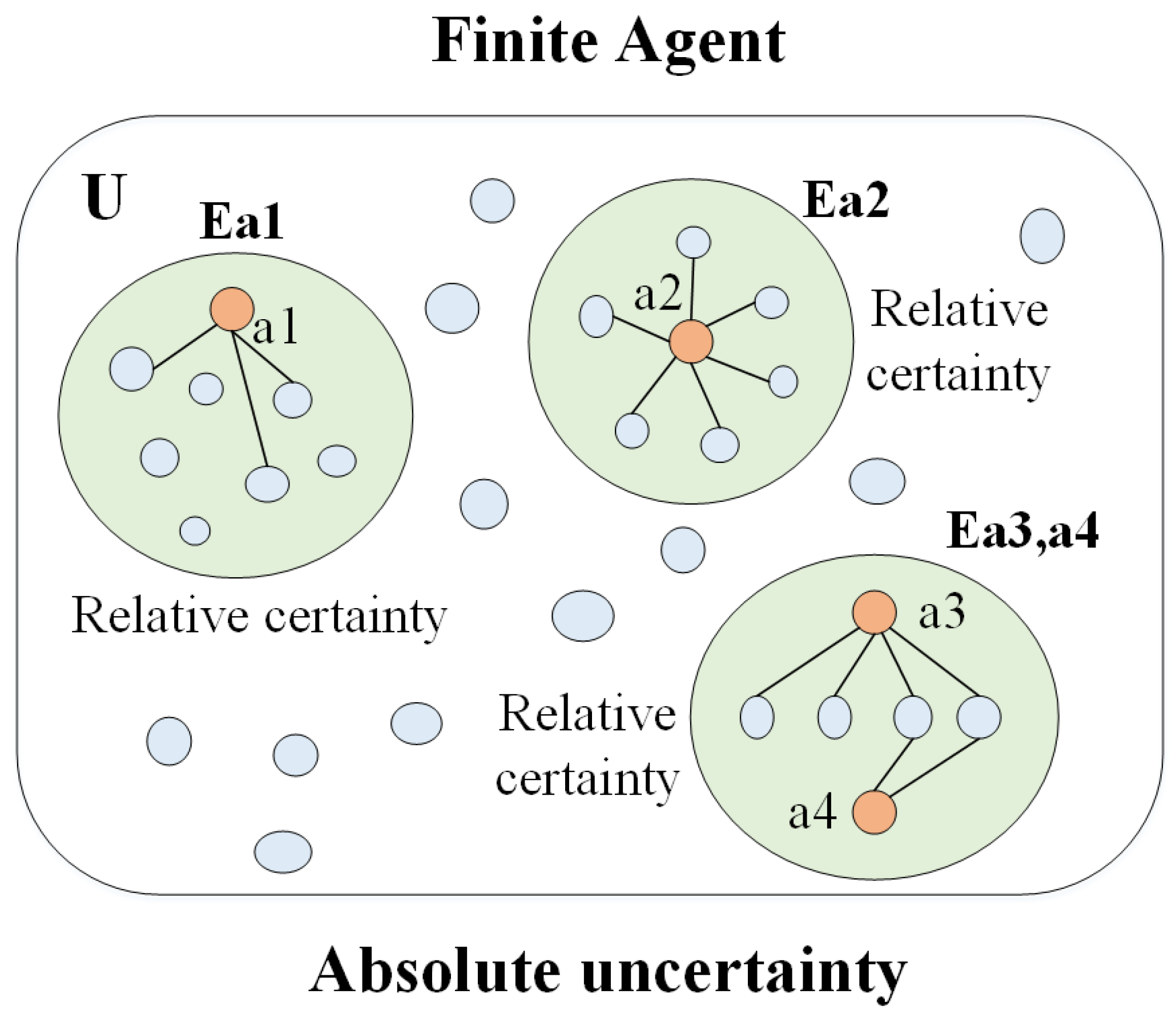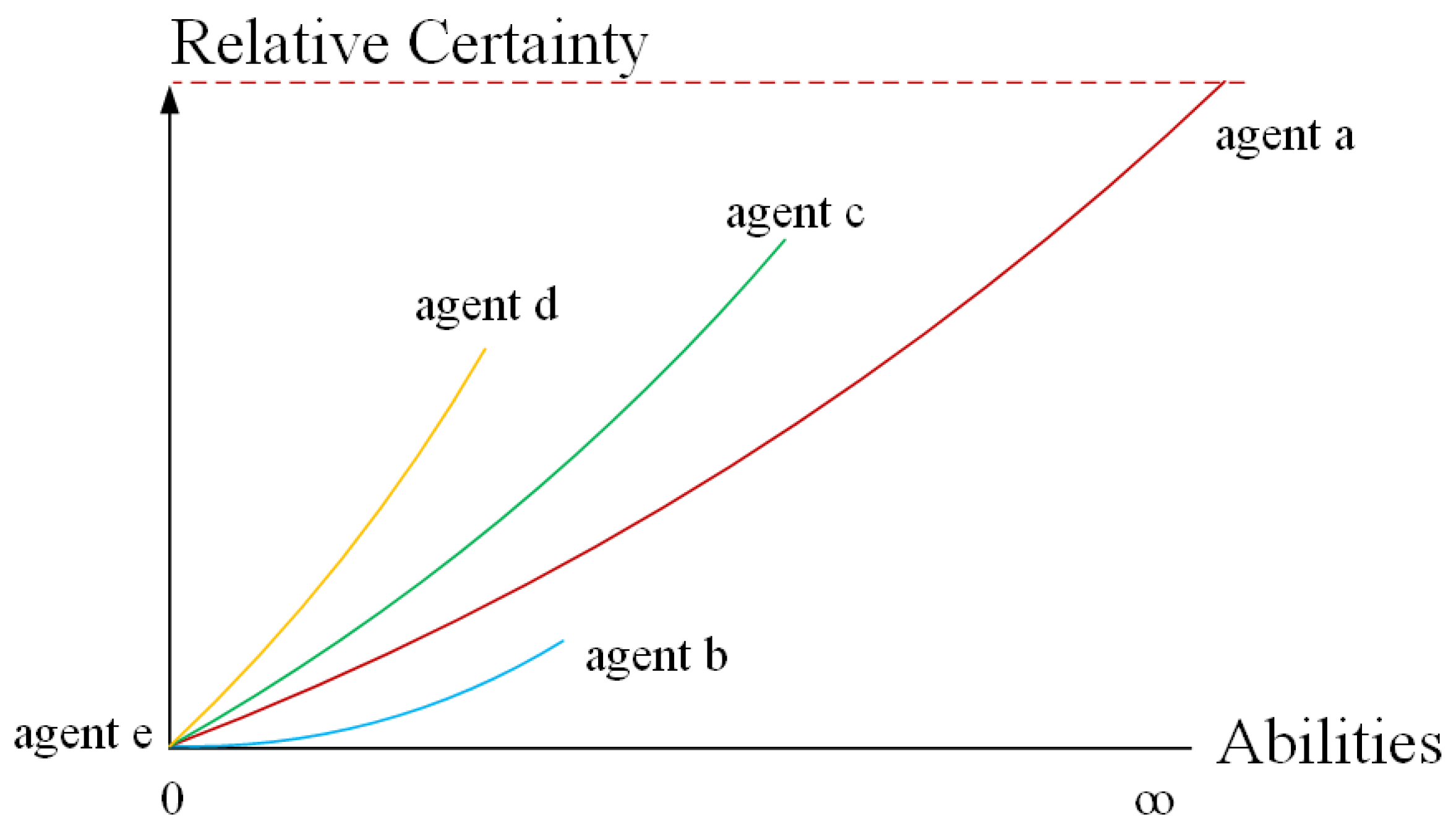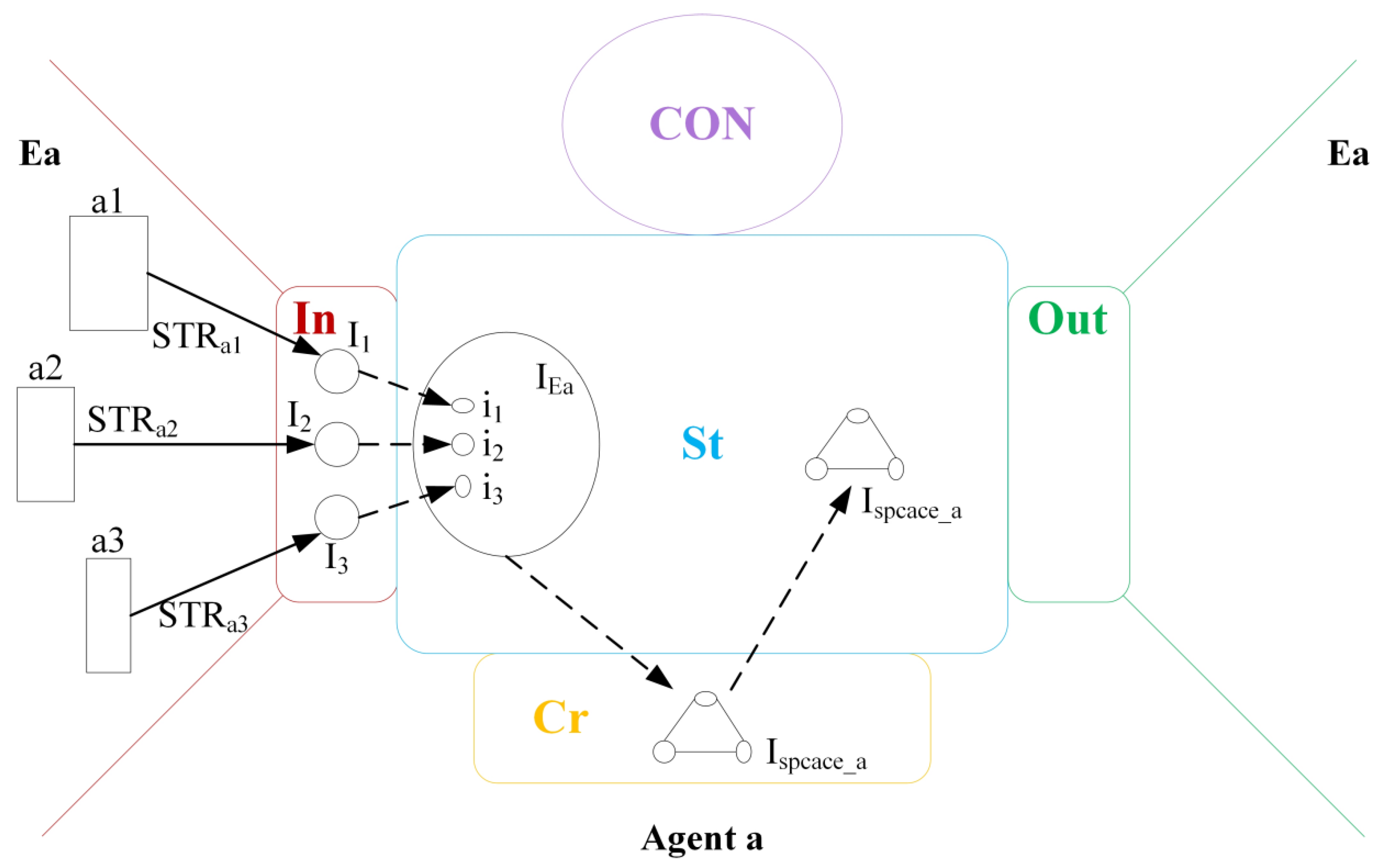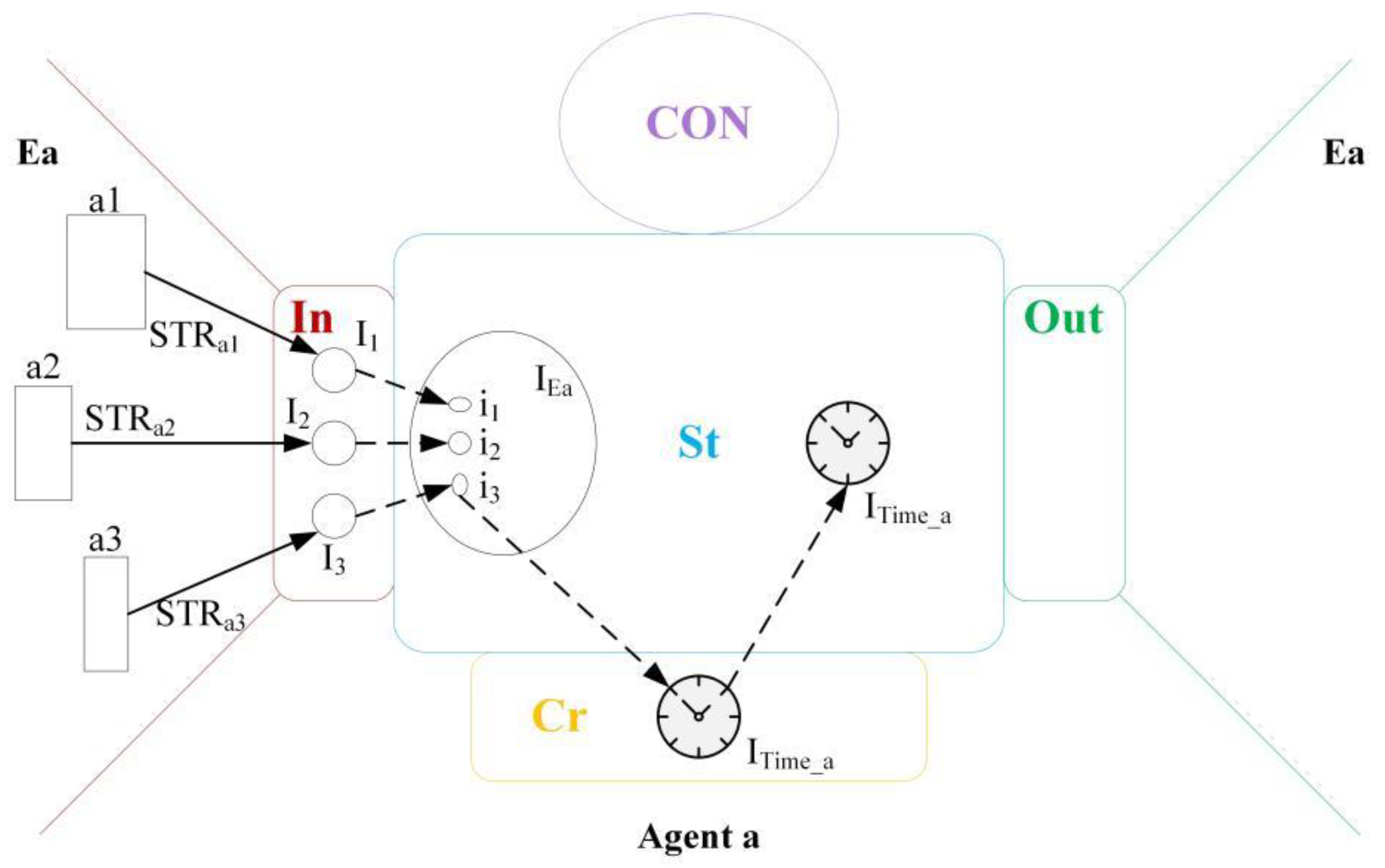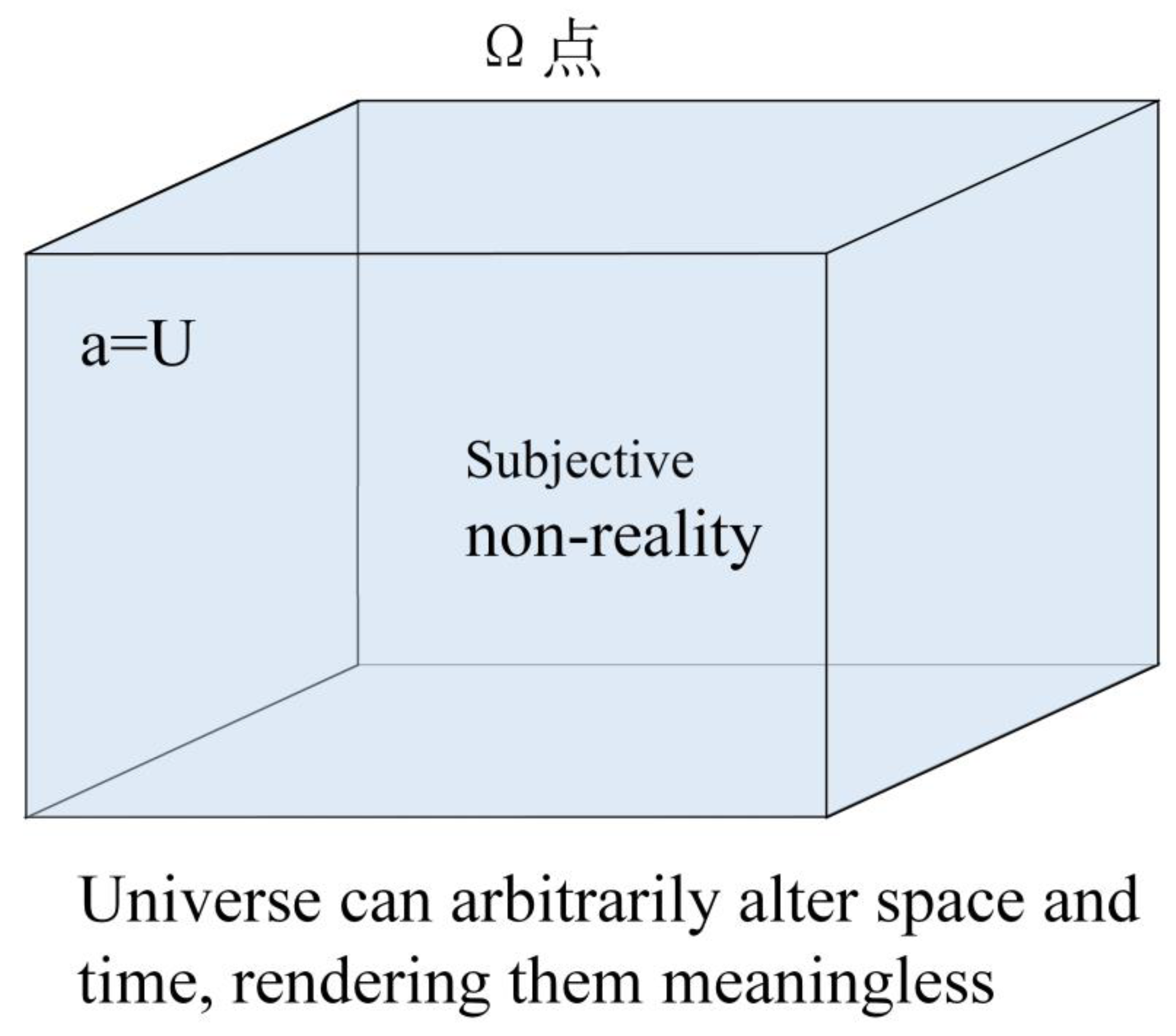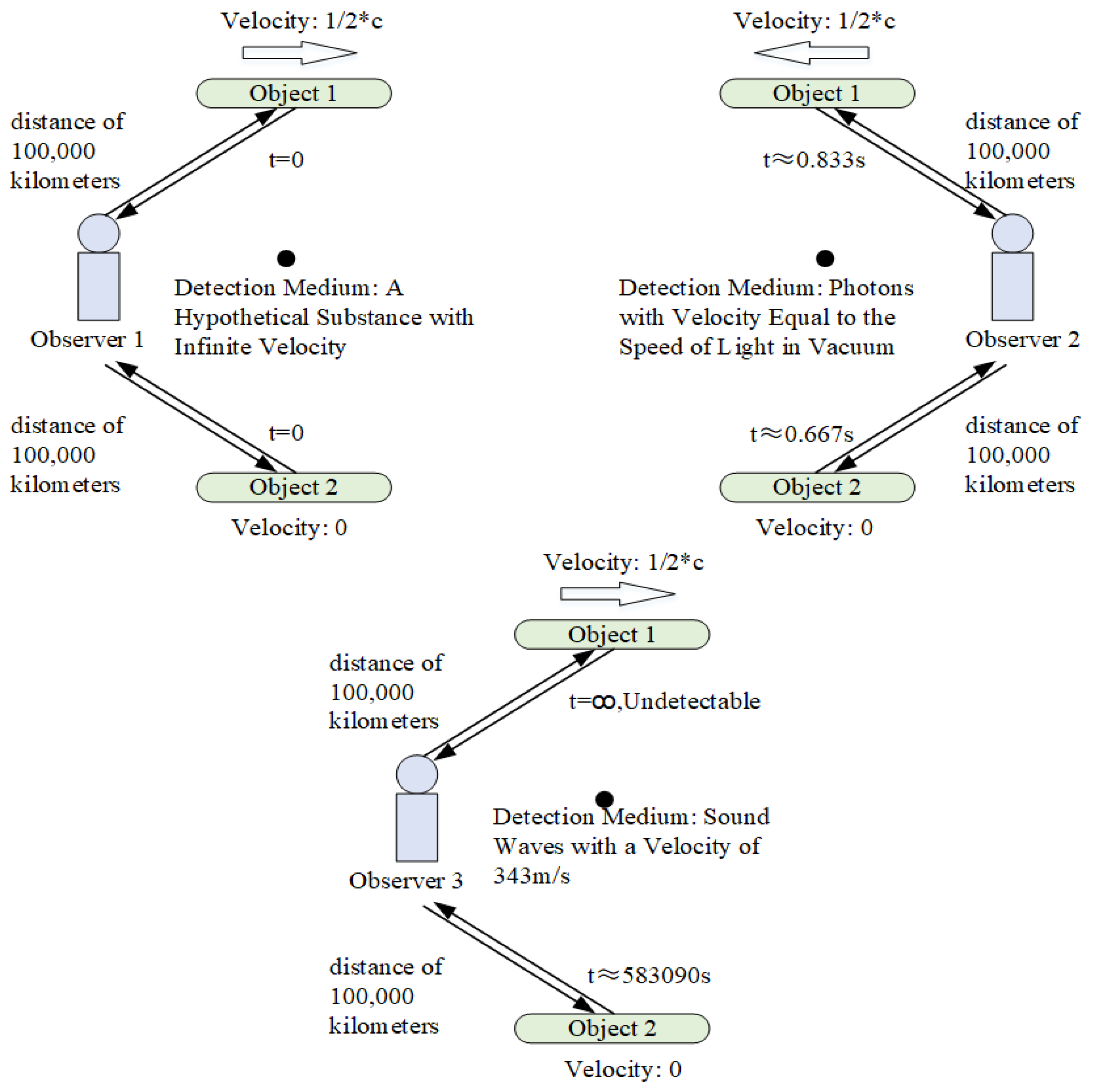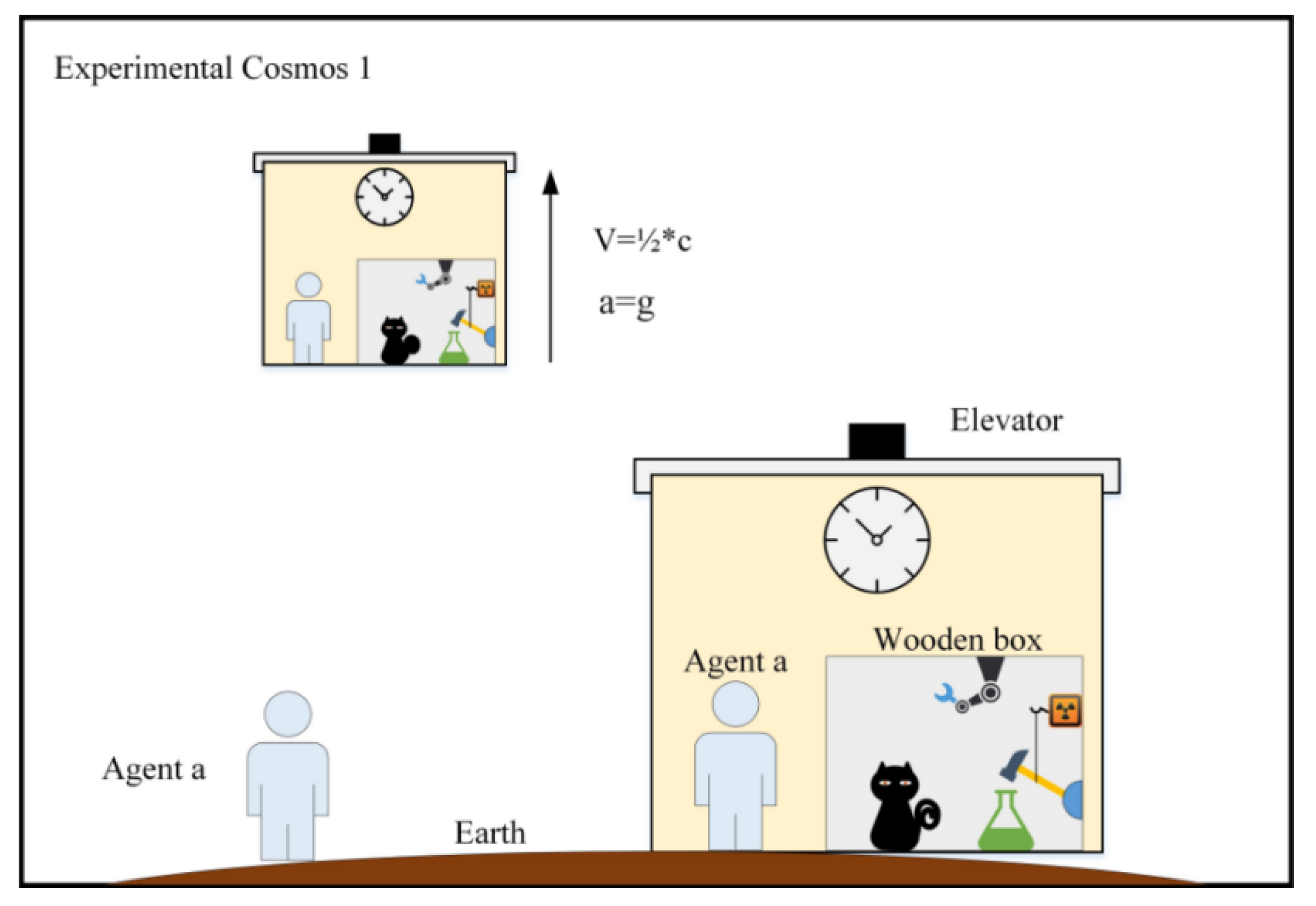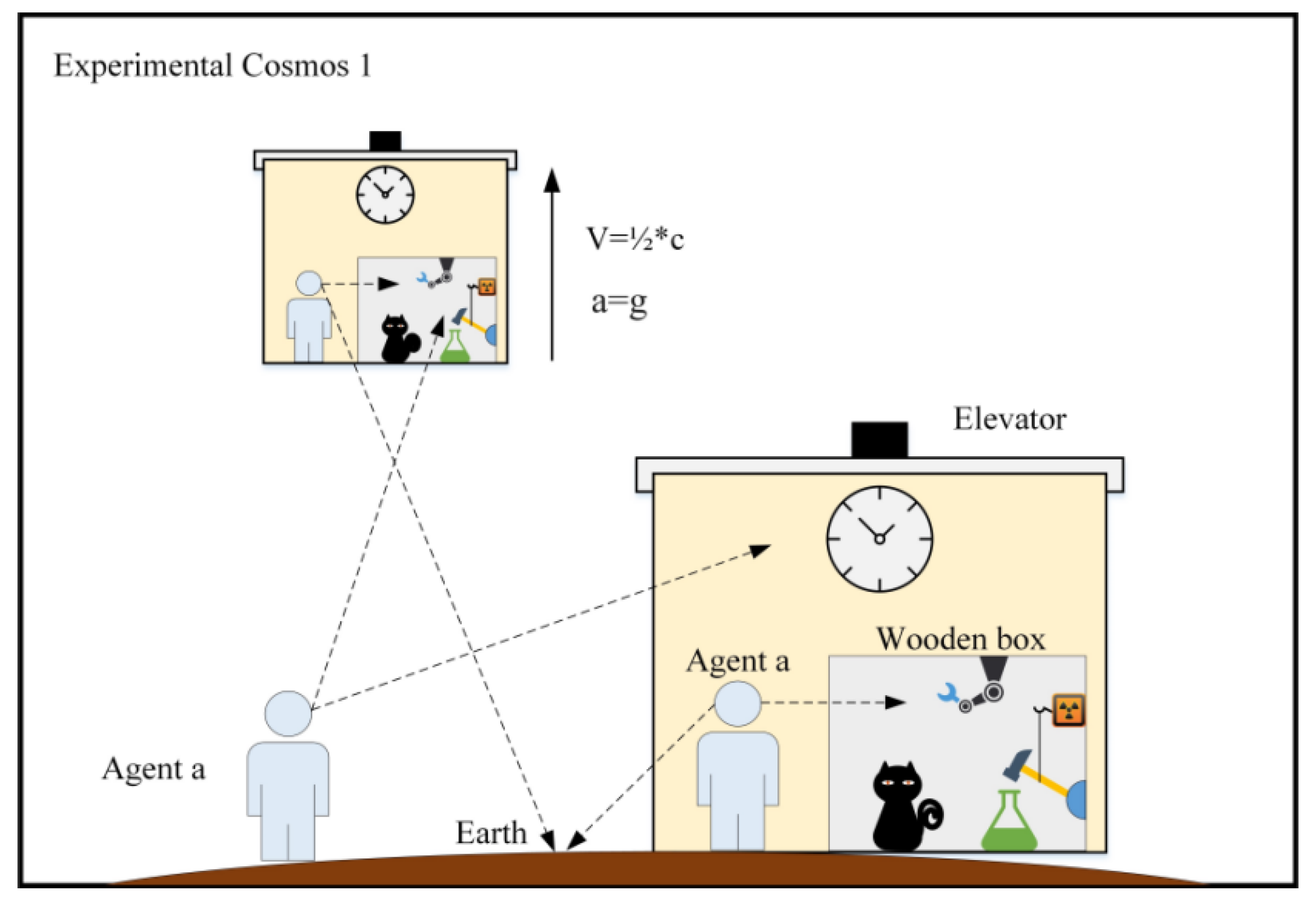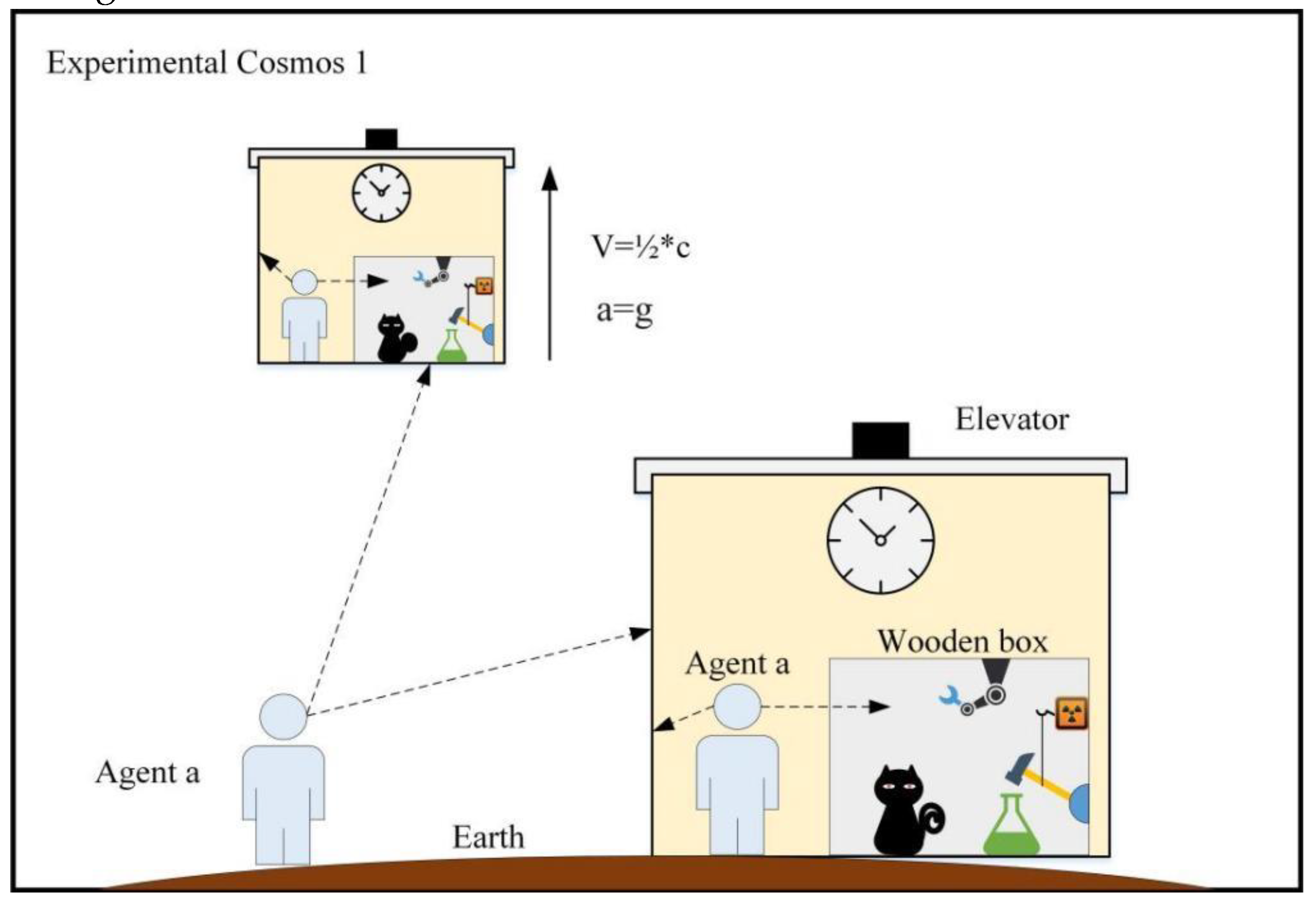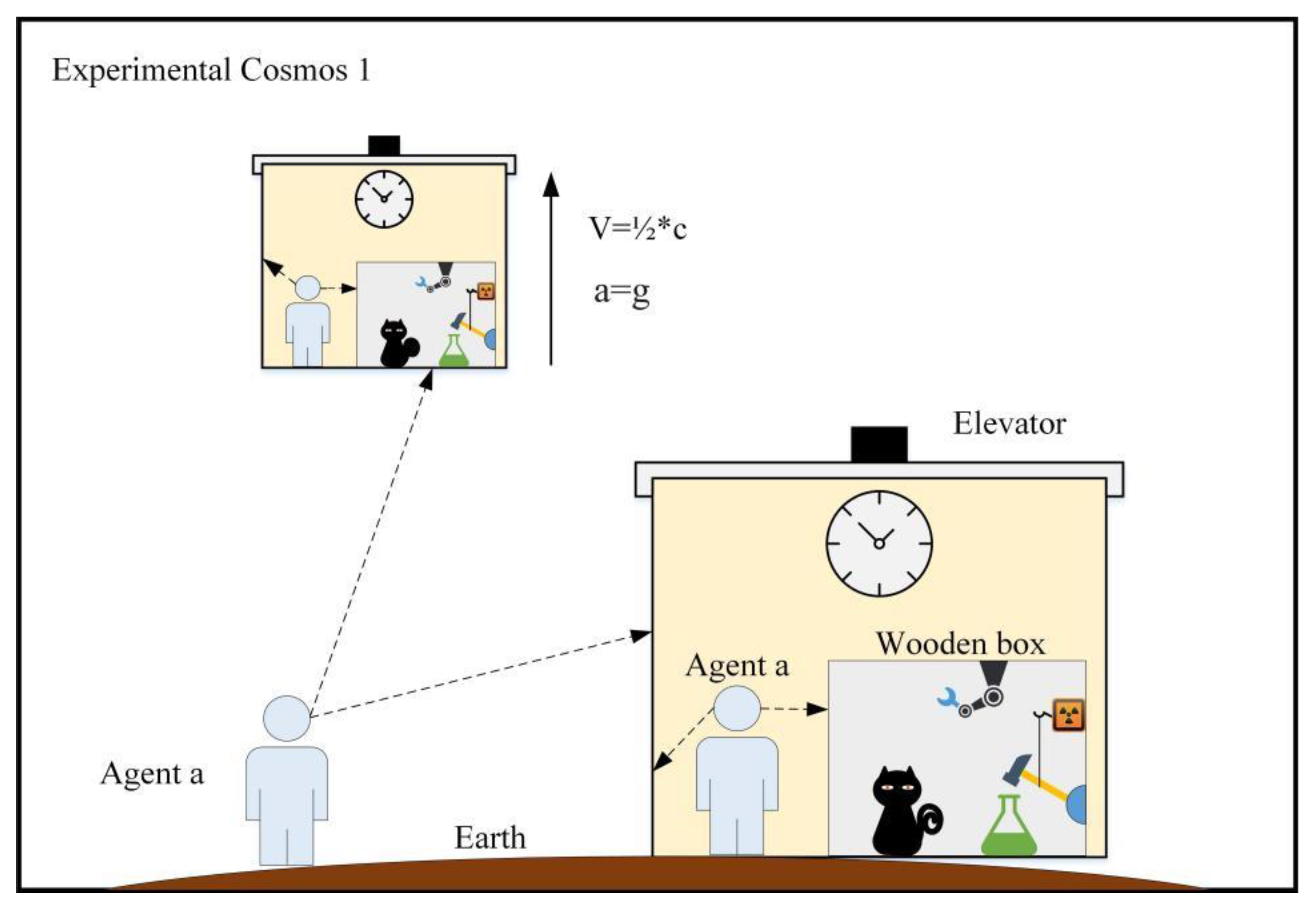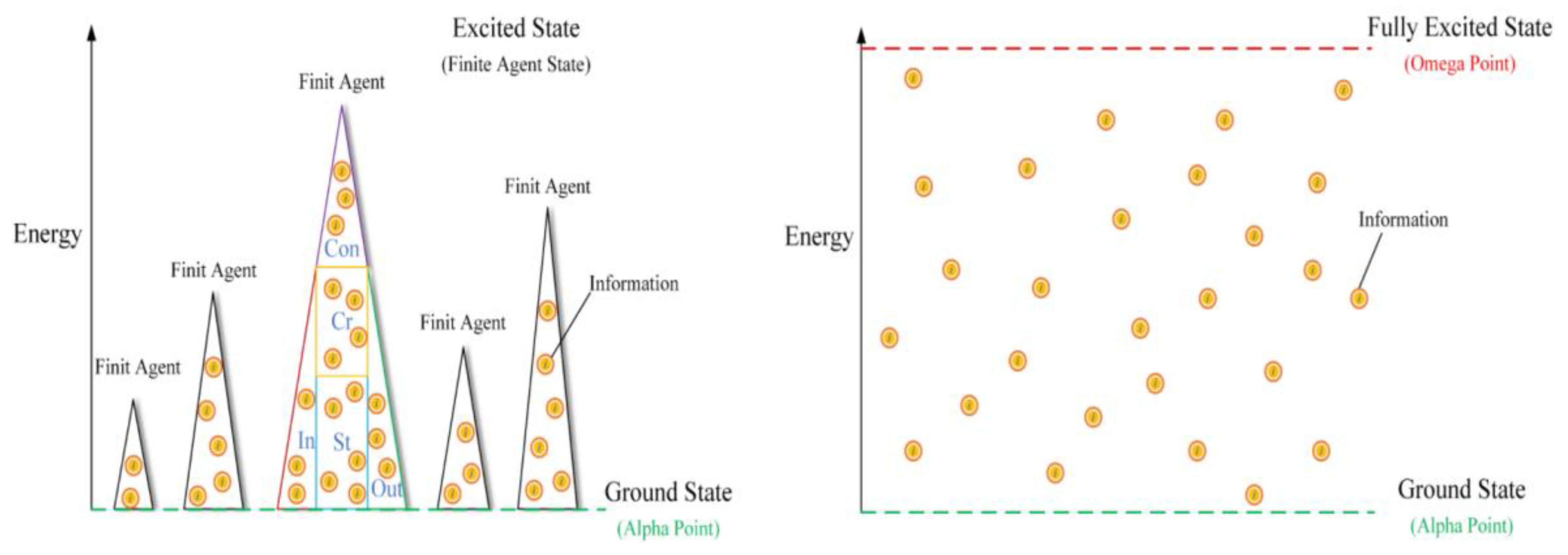The Theory of Universal Intelligent Evolution (Omega Theory) is a foundational theoretical research in the field of intelligence science. It comprises three key models: Standard Agent Model, General Model of Agent Evolution, and Intelligent Universe Evolution Model. Together, these models form a comprehensive theoretical framework. The primary goal of this theory is to explore the intrinsic connections between physics and intelligence science, thereby providing a solid theoretical foundation for constructing a comprehensive Theory of Everything.
2.1. Establishment of Standard Agent Model
In the field of intelligence science, agents have become the core of research, influencing the development of key technological areas such as machine learning, natural language processing, robotics, and intelligent decision-making. The concept of agents is of great significance for a deeper understanding of the nature of intelligence and for advancing the applications of artificial intelligence[
11].
Currently, there is no unified consensus on the definition of agents. Since 2014, to study the fundamental principles of intelligence and consciousness, we have conducted in-depth research on the functional structures of entities that generate intelligence and consciousness. The von Neumann architecture has received significant attention from us as it provides a unified functional framework for computers and intelligent systems[
12]. However, it cannot encompass living systems such as humans.
To address this issue, we conducted an in-depth analysis of the characteristics of different intelligent systems. Based on the Von Neumann architecture, we established the Standard Agent Model as an axiom.
Definition 1. Standard Agent Model
An agent is defined as a system that possesses the capabilities of information (I) input (In), output (Out), storage (St), and creation (Cr), as well as the ability to control (Con) the utilization of these four capabilities.
The mathematical expression ofStandard Agent Modelis:
The differences in performance in the field of intelligence among different systems are due to the varying strengths of these five capabilities. The structure of Standard Agent Model is shown inFigure 3[
13].
In this paper, information is the core concept, and the five fundamental capabilities of an intelligent agent-input, output, storage, creation, and control-work synergistically to process information, forming the basis of the theory of intelligence and consciousness. Information is a multidimensional and interdisciplinary concept. In physics and information theory, it is defined as a quantifiable measure of uncertainty reduction, abstracted as a sequence of bits (bit)[
14], which serves as the fundamental unit of computation and communication.
In philosophy and cognitive science, there are two perspectives: the first posits that information is subjectively constructed by cognitive agents through experience and interaction[
15,
16], and the second attempts to unify the objective and subjective properties of information, as seen in the theories of Fred Dretske[
17] and Karl Popper[
18]. This paper adopts the view that information is subjectively constructed.
In the DIKW model, data, information, knowledge, and wisdom represent different levels and forms of information processing. Data refers to raw symbols or facts that have not yet been processed; information is meaningful data that has been processed and organized; knowledge is structured information formed through the analysis, understanding, and integration of information; wisdom reflects the decision-making and judgment abilities exhibited by living systems in their application of information[
19]. This hierarchical structure of information serves as the foundation for the subjective non-reality of agents.
In computer science, bits are the fundamental units for data storage and transmission, applied across various interdisciplinary fields such as bioinformatics with DNA sequence data[
20] and quantum computing with the concept of qubits[
21]. Therefore, this paper chooses bits as the fundamental unit for measuring the amount of information.
In summary, we posit that in objective reality, matter is the fundamental constituent element with a dimension of mass. Correspondingly, information is the fundamental constituent element of the agent’s subjective non-physical reality, with a dimension of information quantity(I) and a unit of bits (bit).
The explanations of the relevant concepts in the mathematical formula of Standard Agent Model are as follows:
I represents the amount of information that an agent can process or contain. Let a denote an agent, and the amount of information that agent a can process or contain is represented by . denotes Universe, represent the environment of Agent a, which comprises all agents that the Agent a can recognize or influenc.
The input capacity, represents the maximum amount of information that agent a can instantly and synchronously recognize and acquire from Universe or environment . The range of values for is ,. Let x represent the material or system of the objective world, and let be the recognition function used to convert the characteristics and states of into information . The mathematical expression for the input capacity is given by:
The output capacity, represents the maximum amount of information that agent a can instantly and synchronously output and transmit . The output information reflects the impact and changes on the characteristics and states of various component systems in the environment. The range of values for is 1 Represents .Let be the output function that converts the output actions of the agent into changes in the characteristics and states of the material or system in the objective world. This change can be represented by the amount of information . Thus, the mathematical expression for the output capacity is:
The creation capacity, represents the maximum amount of new information that agent a can instantly and synchronously generate based on stored information. The range of values for is in . Let denote the amount of information already stored by the agent. Within a unit time (T) , the agent can generate new information based on these stored data. The emergence process of this new information can be represented by the creation function . Thus, the mathematical expression for the creation capacity is:
The storage capacity represents the maximum amount of information that agent a can instantly and synchronously store based on input information, newly created information, and already stored information. The range of values for is in. Let denote the amount of information input into agent a , and denote the amount of information stored by agent a.and represents the new information created and emerged by agent a. The storage process can be represented by the storage function . Thus, the mathematical expression for the storage capacity is:
The control capacity represents the ability of an agent to maximize the coordinated use of input capacity output capacity, storage capacity, and creation capacity to achieve any given goal. Coordinated use includes selecting capacities, adjusting strengths, combining, and dividing tasks to achieve the goal in the most optimal way. The range of values for is in , .
The control function is defined as:
where α,β,γ,δ are weighting parameters used to adjust the contribution of each capacity in the control function. Thus, the mathematical description of the control capacity is:
Compared to the traditional von Neumann architecture, Standard Agent Model introduces two significant improvements: firstly, it integrates computing and storage functions into dynamic storage units, achieving a unified design for storage and computation; secondly, it adds a Information creation module, designed to demonstrate the innovation and invention capabilities exhibited by humans and other organisms in adapting to and transforming their environment.
As the axiomatic foundation of the Theory of Universal Intelligent Evolution (Omega Theory), the five essential capabilities of Standard Agent Model logically form a minimal and self-consistent closed loop for Information processing. Agents achieve the internal and external conversion and flow of Information through their input and output capabilities; dynamic accumulation of Information through their storage capability; generation and emergence of internal Information through their creation capability; and adjustment of the magnitude of these four Information processing capabilities based on environmental changes and their own needs through their control capability.
Within the framework of Standard Agent Model, various specific intelligent functions can be regarded as part of or combinations of the five essential capabilities. For instance, image and text recognition reflect the Information input capability; robotic arm movements and speech output are applications of the Information output capability; memory and forgetting belong to the Information storage capability; Pattern discovery and reasoning fall under the Information creation capability; and learning ability is a combination of the Information input and storage capabilities.
Based on the differences in the five essential capabilities, agents can be classified into three major types (see
Table 1). This classification not only supports the establishment of the Agent Evolution Dynamics Model and the Intelligent Universe Dynamics Model but also plays a crucial role in exploring the intrinsic consistency between the principles of physics and intelligence science.
In nature, entities such as rocks, iron blocks, biological remains, and discarded robots have all five essential capabilities at zero. They cannot interact with the environment, store Information, or create Information, thus exhibiting a non-active state of intelligence. Systems or agents in this state are defined as Absolute Zero Agents, abbreviated as α Point using the first letter of the Greek alphabet.
Although there is no solid empirical evidence supporting the existence of omniscient and omnipotent intelligent systems, religious texts often describe “God” as an omnipotent and omniscient being[
22]. The concept of Laplace’s demon introduced in classical mechanics also embodies these characteristics[
23]. Both are characterized by having all five essential capabilities at infinity. Such idealized systems are defined as Omniscient and Omnipotent Agents, abbreviated as Ω Point using the last letter of the Greek alphabet, a naming convention that aligns with the similar concept proposed by the French thinker Teilhard de Chardin[
24].
Living humans, animals, plants, and functional intelligent machines or programs all exhibit active intelligence characteristics. These systems are neither in a state of death or obsolescence nor omniscient and omnipotent, meaning their five essential capabilities are neither all zero nor all infinite. Therefore, we define this type of system or agent as Finite Agents, abbreviated as FA.
2.2. Establishment of General Model of Agent Evolution
Based on the different values of the five essential capabilities in Standard Agent Model, two extreme states of agents can be deduced: Absolute Zero Agent, i.e., α Point, and Omniscient and Omnipotent Agent, i.e., Ω Point. These two states define the boundary limits of agent evolution. Theoretically, the evolution of agents towards these two extreme states relies on specific dynamic mechanisms. Accordingly, we introduce two types of intelligence forces to elucidate the dynamics of agent evolution.
The first is α Gravity (), a force that promotes the evolution of agents towards α Point, causing their five essential capabilities to gradually diminish to zero. The second is Ω Gravity (), a force that drives agents towards Ω Point, continuously enhancing their five essential capabilities to infinity. These two forces exhibit opposing characteristics.
Based on the above research, we have constructed the General Model of Agent Evolution.
Definition 2. General Model of Agent Evolution
Any agent undergoes dynamic evolution between α Point and Ω Point, driven by the combined influence of α Gravity and Ω Gravity.
The numerical description of General Model of Agent Evolution is as follows:
a represents an agent, The above mathematical expressions can be simplified as:
This model provides a dynamic framework for the evolution of agents, as shown in
Figure 4. Due to the similarity of General Model of Agent Evolution to the flight trajectory of an aircraft in the illustration, and inspired by the principles of flight, we have constructed the basic theoretical framework of intelligence and consciousness. Therefore, this model is also referred to as the “Flight Model of Intelligence and consciousness.”
Nature showcases numerous instances of agents evolving towards either Ω Point or α Point. For example, human beings have significantly enhanced their Information processing capabilities over the course of their long evolutionary history, especially in the past few centuries, which has markedly accelerated their evolution towards Ω Point[
25]. Conversely, dinosaurs, unable to adapt to environmental changes, became extinct approximately 66 million years ago, reaching the evolutionary endpoint of α Point[
26]. Pandas, being on the brink of extinction, are gradually approaching α Point[
27]. Sharks, on the other hand, have shown minimal changes in their intelligence processing capabilities over hundreds of millions of years, maintaining a relatively stable evolutionary state between α Point and Ω Point.[
28]
The academic community has extensively studied the fundamental principles of intelligence and consciousness, proposing various definitions and constructing frameworks for understanding these two concepts from different perspectives [
29,
30]. Existing theories elucidate the mechanisms and neural bases of intelligence and consciousness from different angles, yet they still exhibit significant limitations. These limitations have led to discrepancies among definitions, hindering the formation of a systematic theoretical framework for intelligence and consciousness.
Inspired by the principles of flight, and based on General Model of Agent Evolution, we propose that intelligence is the agent’s ability to evolve towards Ω Point or α Point under the influence of Ω Gravity and α Gravity, utilizing five essential capabilities. According to the different characteristics of these five capabilities, the first four are defined as basic Intelligence, while the control capability is defined as Higher-Order Intelligence.
By analyzing the connotations of consciousness in medicine and daily life, we propose that consciousness is equivalent to the control function, which is the agent’s ability to control its use of basic Intelligence. Depending on the different subjects of control, consciousness can be further divided into self-consciousness, other-consciousness, mix consciousness, and unconsciousness. Here, the “self” is an internal Information set formed by the agent’s cognition of itself, while the “other” is an internal Information set formed by the agent’s cognition of another agent. By combining self and other with the control capability in different forms, we define the four types of consciousness [
31], as shown in
Figure 5.
2.3. Establishing Intelligent Universe Evolution Model
From the perspective of physics and astronomy, Universe is the sum of all matter and energy, including galaxies, stars, planets, black holes, and all other celestial bodies, as well as light and other forms of radiation, elementary particles, and fields of weak interactions. These components and forces together form the framework through which we understand the structure and evolution of Universe[
32]. Notably, the Big Bang theory posits that Universe expanded from an initial state of extremely high temperature and density about 13.8 billion years ago to Universe we observe today[
33].
Based on General Model of Agent Evolution, we can propose three inferences about Universe from the perspective of intelligent evolution:
If a system or agent evolves to the Ω Point, its range of existence will theoretically expand to encompass the entire Universe, transforming Universe into a unified omniscient and omnipotent agent in essence.
If all systems or agents in Universe evolve to the α Point, Universe will converge into an absolute zero intelligence state, existing in absolute nothingness, at which point Universe itself would cease to exist.
When at least one finite agent exists in Universe, Universe is considered a combination of finite agents and absolute zero intelligence, essentially a finite agent.
Based on the aforementioned hypotheses, Universe can be seen as an agent that dynamically evolves under the influence of Ω Gravity and α Gravity. This conclusion also indicates that Ω Gravity and α Gravity act extensively throughout Universe, which can be regarded as universally existing fields in Universe, named the Ω Field and α Field, respectively. Within this theoretical framework, Ω Gravity and α Gravity can be seen as the force effects of the Ω Field and α Field on different types of agents.
Therefore, we have constructed Intelligent Universe Evolution Model, as shown in
Figure 6.
Definition 3. Intelligent Universe Evolution Model
Universe is an agent that continuously evolves among three states—Absolute Zero Agent, Finite Agent, and Omniscient Omnipotent Agent—under the combined influence of Ω Field and α Field.
To quantify the direction of intelligent evolution of Universe under the influence of these two fields, we introduce a core quantitative tool: the Global Potential Difference(. This tool is defined by the following formula:
where and represent the potential energies at each position q in Universe, generated by “Field Ω” and “Field α,” respectively. The direction of Universe’s evolution follows these rules:
Note: Under the condition where , this indicates that across the entire Universe, the potential contribution of Field Ω surpasses that of Field α, causing Universe to tend towards Ω Point state dominated by Field Ω. Conversely, when , Universe tends towards α Point state dominated by Field α, as this indicates that the potential contribution of Field α is predominant throughout Universe. When , it signifies that the potential contributions of Field α and Field Ω are balanced overall, leading to a state of dynamic equilibrium. In this state, although there may be minor fluctuations in local regions, on a macroscopic scale, Universe maintains balance without favoring any dominant state.
The mathematical expression of the aforementioned Intelligent Universe Evolution Model can also be simplified as:
Intelligent Universe Evolution Model provides a new framework for exploring the origin, evolutionary process, and dynamic characteristics of Universe. According to this model, agents are the fundamental units that constitute Universe. When Universe is at α Point, it represents an absolute “void,” containing no elements and not even Universe itself. When Universe is at Ω Point, it becomes a singular omniscient and omnipotent agent.
When Universe is in a finite agent state, it consists of finite agents and absolute zero agents. Different types of agents can form systems of various scales through mechanisms such as combination, nesting, and linking, ranging from the microscopic level close to α Point to the macroscopic level close to Ω Point. This leads to the diversity and complexity of Universe. Inanimate objects or matter can be considered a special state of agents (absolute zero agents).

